




AVIATION INTERNATIONAL NEWS
ACCIDENTS: QUARTERLY BUSINESS AVIATION UPDATE
SUSTAINABILITY: PUTTING SOLAR POWER TO WORK
ASSOCIATIONS: BUNCE BIDS BYE AFTER GAMA SUCCESS
Special Report: What's new in safety
Epic Aircraft squeezes maximum performance from a thoroughly modern single-engine turboprop
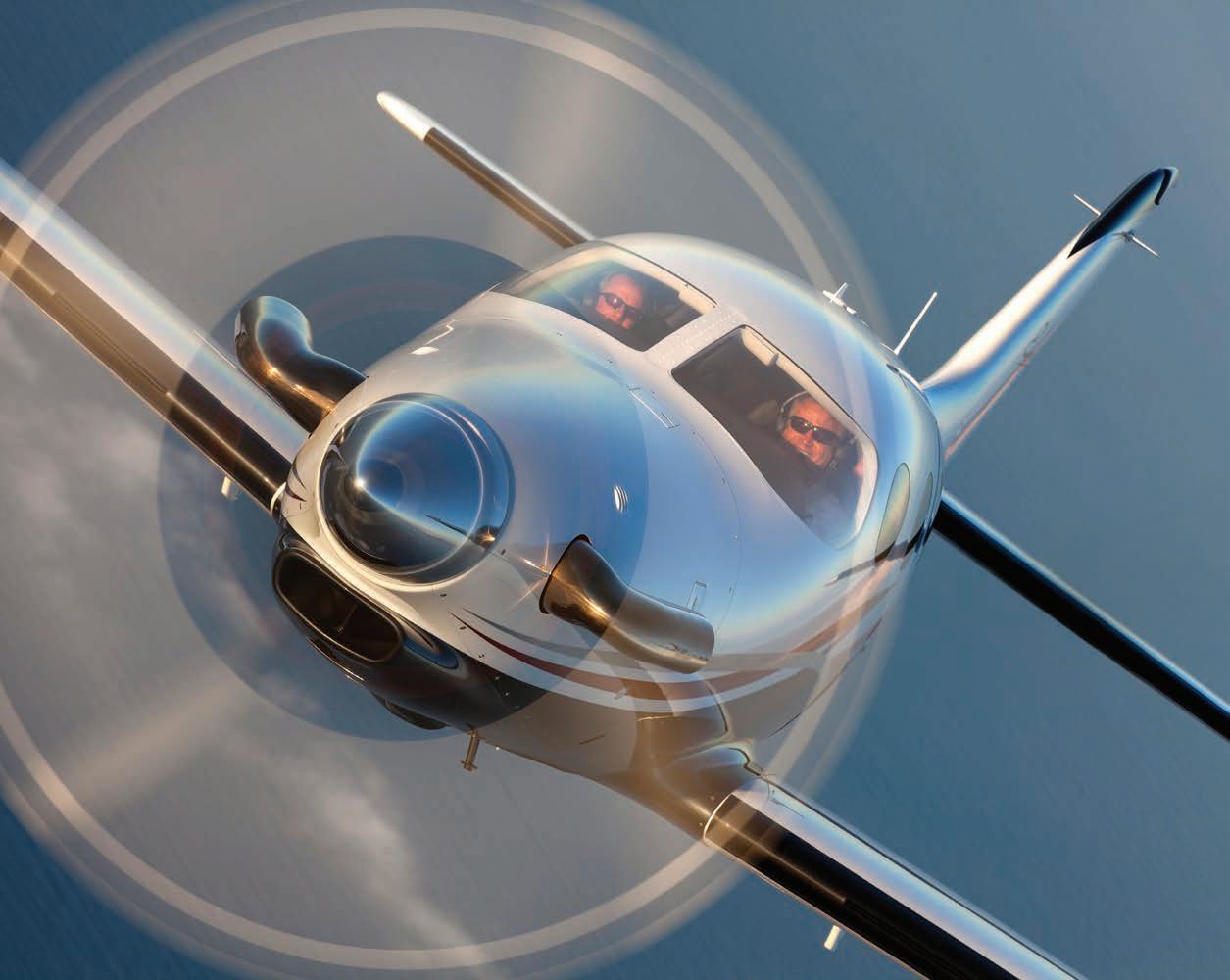
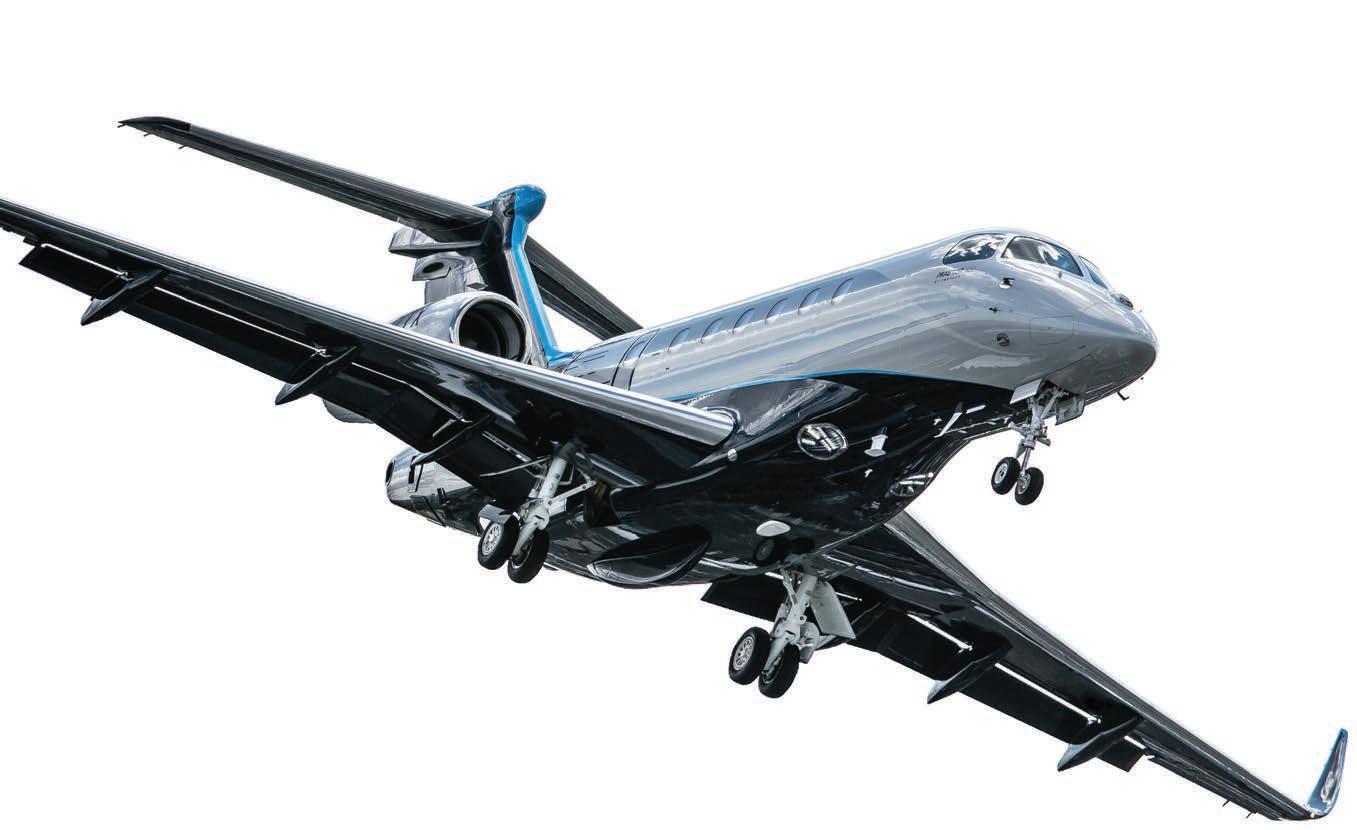


Scan the QR code to see the mission
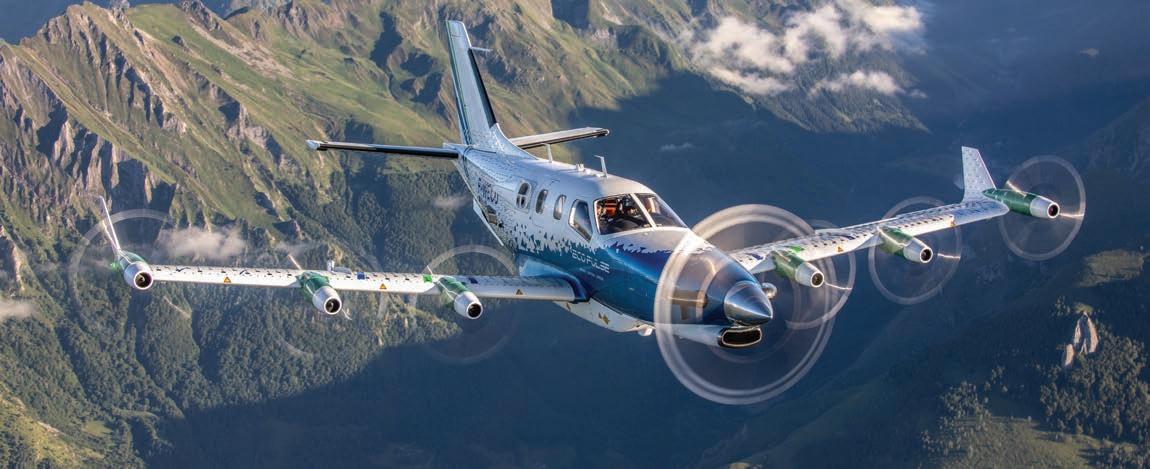
12 Airports , FBOs tap solar power in decarbonization plans
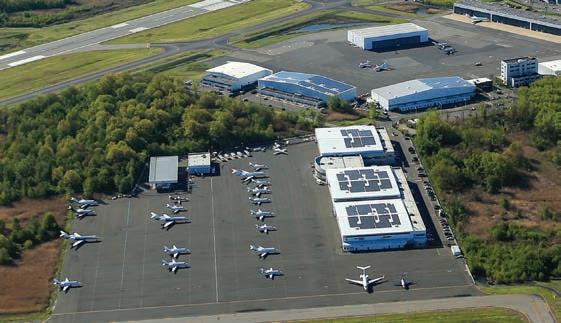
30 Special Report: U.S. runway incursions drive new safety push
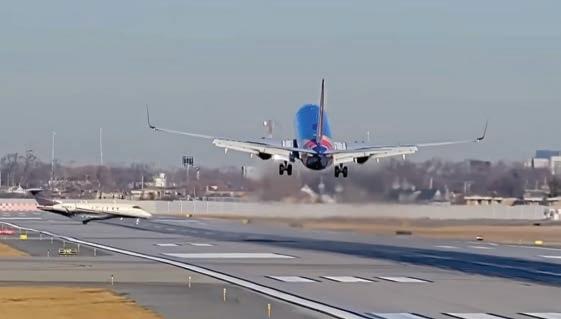
8 Daher planning ‘more electric’ successor to EcoPulse
4 Bizav industry grapples with ramifications of tari s
6 Survey finds FBO fuel sales flat in 2024
10 Business jet accidents and fatalities rise globally in first quarter
16 Special Report: Notams, finally getting fixed?
24 Special Report: In face of barriers, SMS picks up steam 33 ACA grows in thriving charter market
Pilot Report: An epic Epic E1000 44 Pete Bunce: A reflection of 20 years
46 On the Ground | 48 MRO | 50 Accidents
Compliance | 54 People in Aviation On the cover: Epic Aircraft's E1000 GX
Correction: A chart in the April AIN monthly print edition inadvertently omitted Million Air at Houston Hobby in the top 10% of rated FBOs in North America, citing a di erent FBO in its place. Million Air did reach that mark with a rating of 4.67.

BY KERRY LYNCH
The business aviation community continues to try to absorb the ramifications of the White House’s rollout of global tariffs, but leaders are warning aircraft owners and operators to obtain expert or legal advice on the applicability before they conduct a transaction or upgrade their aircraft. They also warn that the tariffs are likely to have a broader economic impact, including on aircraft valuations.
President Donald Trump last month rolled out global tariffs, announcing a baseline of 10% worldwide and, initially, for imports from many countries, additional “reciprocal” tariffs that could become up to 50% higher. However, after days of market roils, Trump paused the additional reciprocal tariffs on most countries, except China, for 90 days.
The announcement did not change the tariffs already assigned for imports from Canada and Mexico, and the exemptions under the United States-Mexico-Canada Agreement (USMCA)—including aircraft and certain components—remained in place for those countries.
Speaking during an NBAA webinar, Jonathan Epstein, partner at Holland & Knight and member of the NBAA regulatory issues advisory group, noted that aviation has been

largely duty free since 1979 under the World Trade Organization’s agreement on trade and civil aircraft but said the tariffs are now less clear for aircraft and parts from countries outside of Canada and Mexico, as well as parts that do not qualify for the USMCA. Adding layers of complexity, there are numerous murky areas with the tariffs, such as accounting for the percentage of U.S. material in an import as well as assigning a tariff on a “transformed” aircraft or component, such as in completions.

KRISTIE GRECO JOHNSON
NBAA SENIOR V-P OF GOVERNMENT AFFAIRS
NBAA hosted the webinar to answer some of the numerous questions swirling around about what the tariffs mean for business aviation. NBAA senior v-p of government affairs Kristie Greco Johnson warned: “There are quite a few uncertainties that still exist,” and she encouraged operators to seek legal counsel for specific questions.
Greta Peisch, a partner at Wiley Law and former general counsel for the Office of the United States Trade Representative, explained that the White House has included provisions allowing them to modify the tariffs during negotiations with other countries—a process that has already begun. “It does seem as if this is a jumping-off point to have those conversations. Now, how fast those go, it’s a big question,” she said. z
Dassault Aviation is completing assembly of the first Falcon 10X at its Bordeaux-Mérignac facility in France. Service entry is planned for late 2027. At the same time, engineers are conducting airframe load and fatigue limit testing on a mechanical testbed to validate airframe life limits. Falcon 10X systems are being tested on multi-system test benches at Dassault’s Istres flight-test center. Tests will verify proper functioning of avionics, engine controls, flight controls, hydraulics, electrical distribution, braking, fire protection, and other aircraft systems. Tests of the flight deck and the digital flight control system are underway at Dassault’s Paris headquarters.
Universal Avionics introduced an AI-powered taxi assist solution to address safety challenges during aircraft ground operations at airports. Taxi Assist leverages speech-to-text technology designed for noisy environments to turn verbal ATC instructions into intuitive visual directions on flight deck displays. Features include verification of pilot readback against ATC confirmation, graphical displays with runway indicators and warnings on navigation maps, and logged clearance instructions with taxi status updates.
Ahead of its planned service entry later this year, construction on the first production Bombardier Global 8000 is nearing completion at the airframer’s final assembly center near Toronto. Meanwhile, the program’s Wichita-based test aircraft (the modified former Global 7500 FTV5) has been flying missions to Europe to showcase its performance under real-world operating conditions. The 8,000-nm aircraft will be able to link city pairs such as Dubai-Houston, Singapore-Los Angeles, and London-Perth.
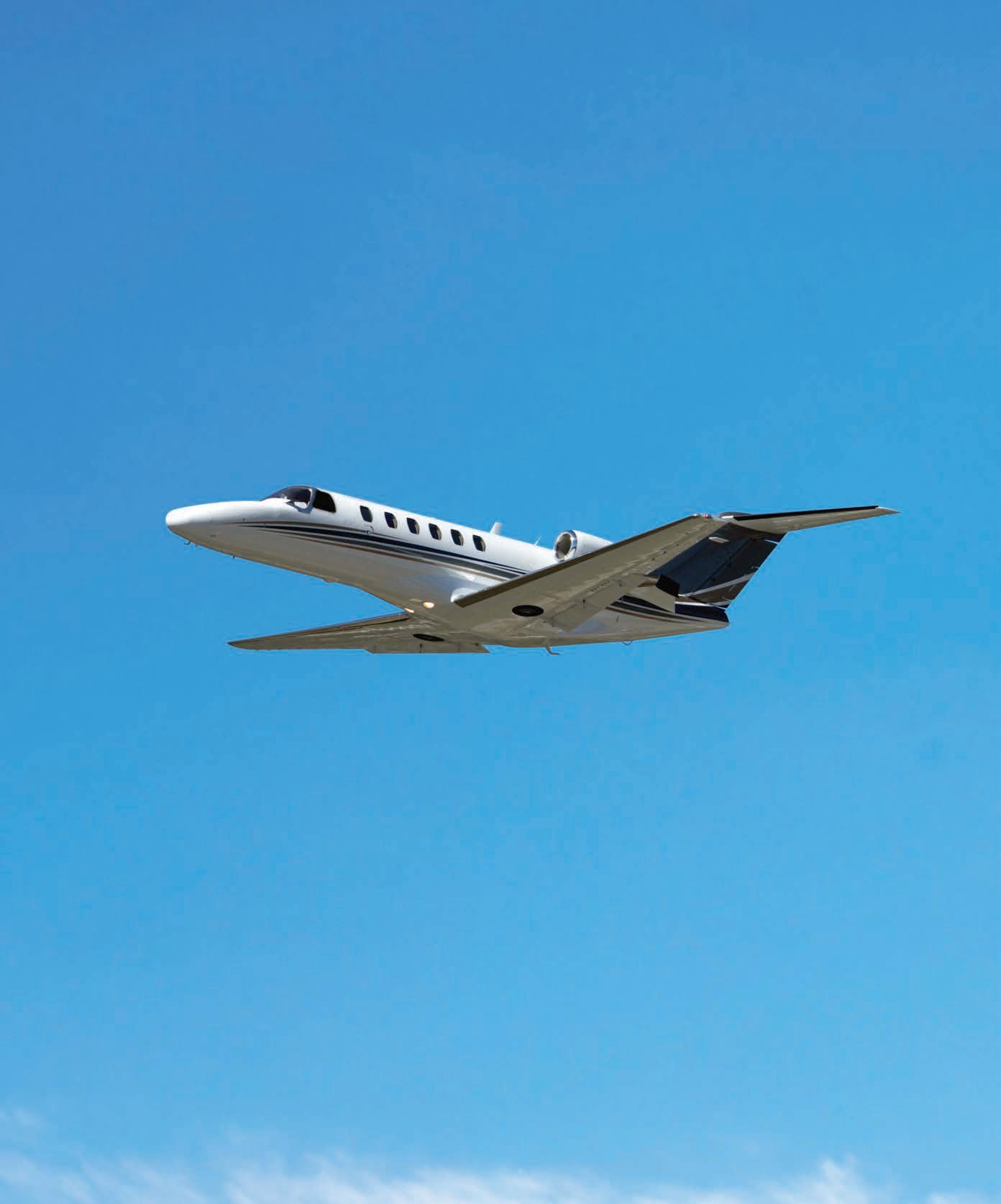

BY CURT EPSTEIN
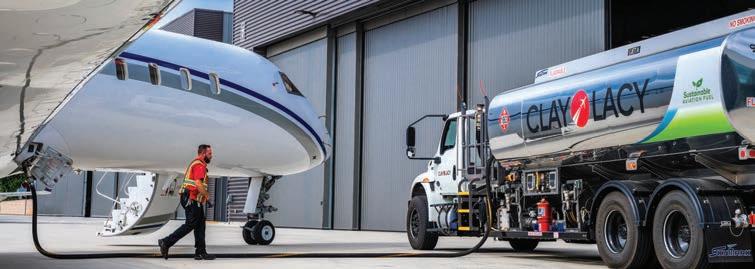
FBO fuel sales in 2024 were stable but stagnant, according to results from the Aviation Business Strategies Group’s (ABSG) annual survey, released on the eve of NBAA’s Schedulers & Dispatchers Conference in New Orleans.
While 7% of respondents to ABSG’s survey this year indicated that they saw fuel sales increase by more than 8%, 22% reported that their fuel sales remained static year over year, the highest response in this category in the survey’s history.
Overall, 58% of respondents either saw a reduction or no change in their fuel sales. ABSG principals John Enticknap and Ron Jackson noted the same totals in previous results comparing 2023 with 2022.
“After a robust recovery in fuel sales in 2021 following the pandemic, we’ve seen a gradual deterioration in fuel sales across most geographic markets,” said Enticknap. “The results of our recent survey would indicate that the industry has entered into a period of stagnation where the highs and lows seem to be evening out.”
When asked what they viewed as contributing factors, survey respondents pointed to larger, more fuel-efficient aircraft capable of tankering fuel; rising cost of aircraft ownership, which forces fringe customers out of
the market; and the increasing cost of hangar space to expand base customer revenue.
“In addition, several survey respondents indicated there has been a marked slowdown in Part 91 aircraft traffic, which has largely been the bread and butter of their business,” Jackson said. Data from Argus International backs up this hypothesis: Business flying declined for the second year in a row. In 2024, Part 135 activity was down 3.5%, while Part 91 decreased by 4.8%.
The survey also attempts to gauge respondents’ confidence in the economy, asking whether they believe it is headed in the right direction. This year, 43% indicated they were undecided about the direction, while 20% responded in the negative.
On the topic of hangar space, 52% said they would not add hangars, while 27% plan to build large box or community hangars; 8% said they would add more T-hangars; and 13% indicated they intend to add both.
Lastly, the ABSG asked participants to list their top five industry concerns. Responses included regulatory and compliance issues; training and turnover; the increasing cost of airport improvements; operating costs such as salary and insurance; and the reluctance of tenants to pay higher rents to support the return on investment for improvements. z
Aircraft owners can now block their personal information, including names and addresses, from public display on FAA websites. This change, mandated by Section 803 of the FAA Reauthorization Act of 2024, enables owners to submit privacy requests through the Civil Aviation Registry Electronic Services system. NBAA welcomed the move, citing security concerns for business aviation operators. Publicly available aircraft ownership data has raised broad industry concerns about passenger safety, corporate espionage, and unauthorized tracking.
In light of growing GPS jamming and spoofing reports, the U.S. Federal Communications Commission (FCC) is exploring commercial technologies that would provide an alternative source of position, navigation, and timing (PNT) data. “Although GPS is indispensable…it represents a single point of failure that can be vulnerable,” the agency said, outlining plans to accelerate e orts to “support new and complementary or alternative PNT solutions.” Potential technologies include low-earth-orbit satellite networks, the broadcast positioning system, enhanced long-range navigation (eLoran), and NextNav, a ground-based multilateration system.
Embraer Executive Jets started o 2025 on a high note with deliveries in the first quarter up 28% from the same period a year ago. The manufacturer handed over 23 aircraft in the first three months versus 18 in the first quarter of 2024. The mix consisted of two Phenom 100s and 12 of its larger sibling, the Phenom 300. Meanwhile, Embraer delivered three Praetor 500s and six Praetor 600s—two more midsize jets than it handed over a year ago.






A worldwide network, now with even more feld and airborne support teams near you.










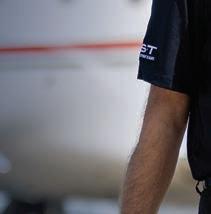












































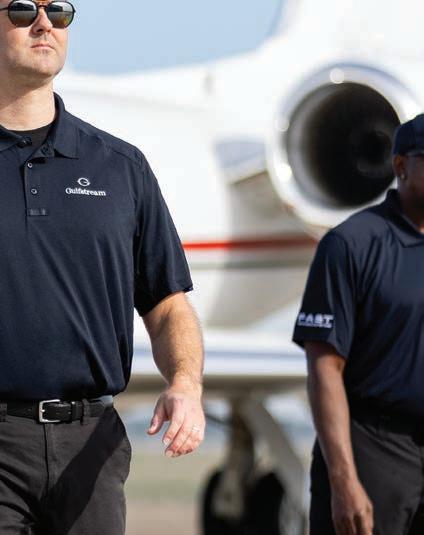
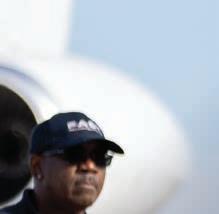









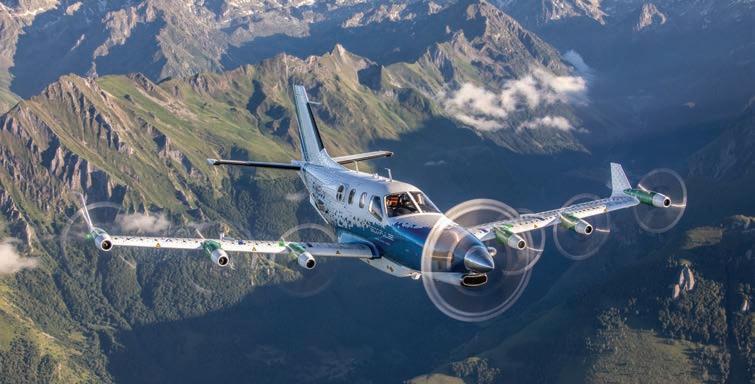
BY CHAD TRAUTVETTER
Using insights from the EcoPulse hybrid-electric demonstrator, Daher Aircraft is taking a pragmatic approach to a “more electric” airplane it expects to launch in 2027, company CEO Nicolas Chabbert said at the Sun ‘n Fun Aerospace Expo.
EcoPulse, a TBM 960 fitted with six electric motors on the wing leading edges, “was not a commercial product—it truly was a demonstrator for motors and batteries,” he told AIN. “What we now envision [for a commercial product] is a more electric airplane, likely hybrid-electric and a derivative of one of our existing airplane models,” meaning the TBM 960 or Kodiak 100/900.
According to Chabbert, the company learned a great deal from the 20 EcoPulse flights. “We learned that we will have to revisit aerodynamics for electric aircraft, as well as make changes to the user interface,” he said, specifically citing the control yoke and power levers.
“We also need to clearly outline the desired benefits, as well as the storage, distribution, and use of electric power. Then there’s certification.”
He is also disappointed with the progress on battery technology. “We’re not even close to where they projected 10 years ago,” he said, explaining that energy density was expected to double by now but has increased only by about 10%.
“We tested a 360-kilogram battery on EcoPulse and didn’t get the performance that we were hoping, though we did find ways to make better use of the available power. For perspective, a 360-kilogram battery equals about 10 kilos [22 pounds; about 3.5 gallons] of jet-A.”
Chabbert said Daher polled customers about a more-electric airplane and the response was positive, with “no pushback.”
“Whatever we do in this space has to be as safe—or safer—than the products we have today,” he noted. “We’ll also have to go back to basics on aerodynamics. Aircraft are a compromise of weight, power, and flight qualities.
“The way we think of ‘more electric’ is more assisting,” Chabbert added. “We need to push technology. The end product has to be fully embraced by our customers.” z
Unither Bioélectronique test pilot Ric Webb lifted o in a Robinson R44 helicopter powered by a hydrogen fuel cell propulsion system at Roland-Désourdy Airport in Bromont, Québec, Canada, on March 27. A subsidiary of United Therapeutics, Unither is developing hydrogen-powered helicopters, including a hybrid-electric R66, that it plans to use to transport manufactured organs for transplants. The demonstrator R44 marked the first flight of a hydrogen-powered helicopter.
Victor Sierra Aviation Holdings has added The Av8 Group to its stable of aftermarket component manufacturing companies. Av8, which specializes in FAA parts manufacturer approval (PMA) development, overhauls and repairs business and regional airplane landing gear and electrical, mechanical, and hydraulic components. The companies under the Victor Sierra umbrella—including Aviation Products Systems, McFarlane Aviation, and Tempest Aero Group—serve more than 45,000 customers and o er more than 3,500 proprietary PMA parts.
Epic Aircraft launched the E1000 AX, an upgraded version of its E1000 GX, last month at the Sun ‘n Fun Aerospace Expo. The new variant o ers more than 25 new features, including Garmin Autothrottle and Autoland, and eight new paint schemes. Wellequipped price is $4.85 million—$100,000 more than the GX model it replaces—with certification and service entry expected in July. Other added features include automatic yaw damper, electronic brake hold, CoolView windows, Garmin PlaneSync, GRA 5500 radar altimeter, 3D SafeTaxi and Taxiway Routing, GWX 8000 weather radar, and True Blue lithium-ion battery.
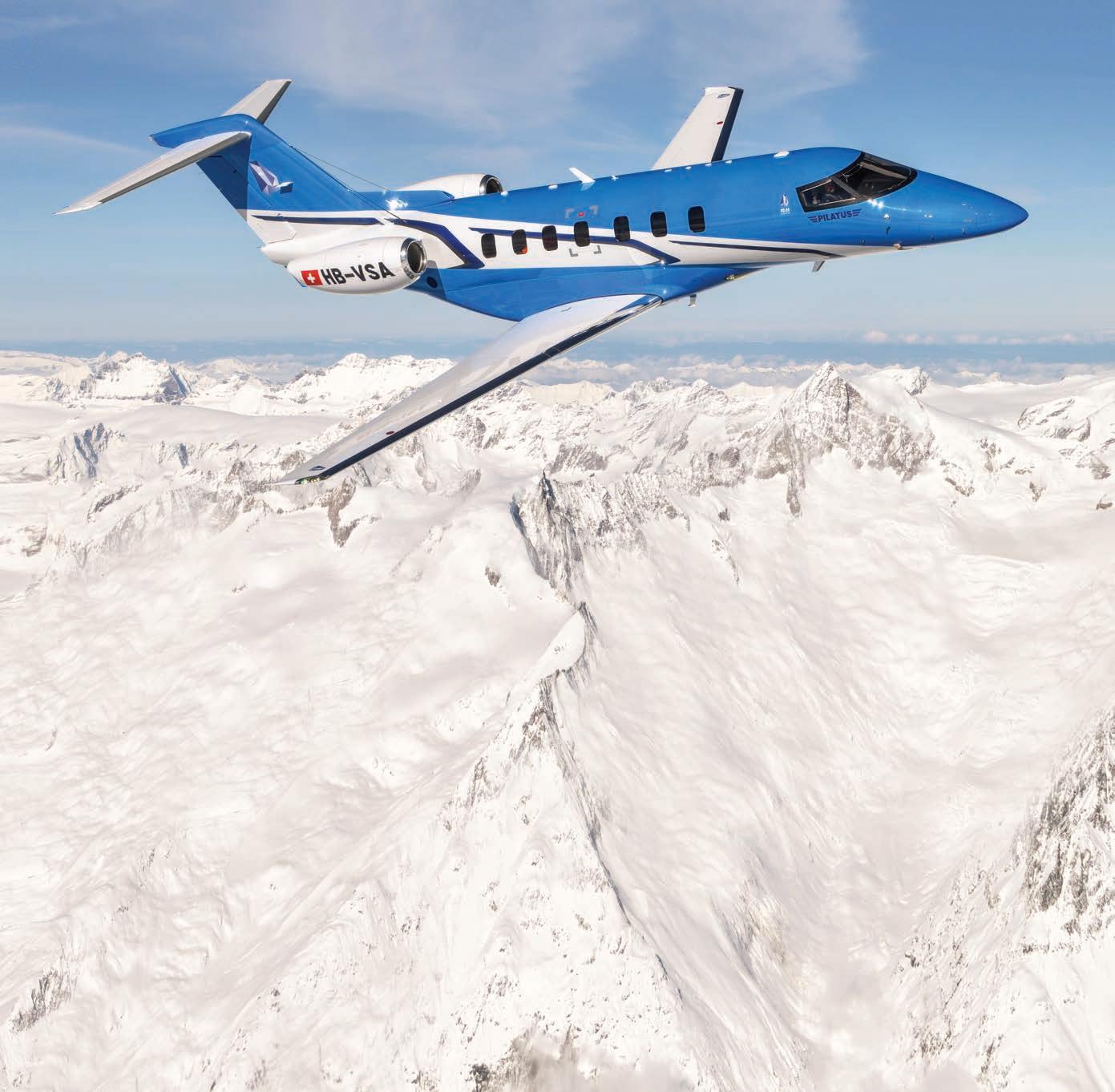
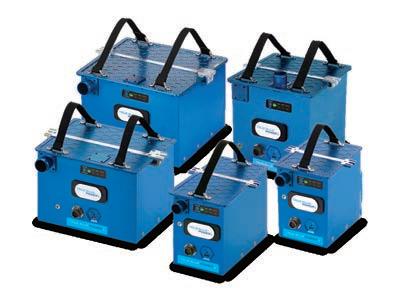
BY GORDON GILBERT
Five fatal business jet accidents claimed 12 people in the first three months versus four accidents and 11 deaths in first-quarter 2024, according to preliminary data gathered by AIN. U.S.-registered business jets fared better, with two fatal accidents claiming two people in the quarter versus
three accidents and nine fatalities in the same period last year. But non-U.S.-registered business jets experienced a significant uptick in fatalities: 10 deaths in three accidents in the first quarter compared with two deaths in a single accident in the same timeframe last year.
Bombardier has begun construction on a Middle East aircraft service center at Al Bateen Executive Airport (OMAD) in Abu Dhabi, UAE. The 120,000-sq-ft facility is expected to open in the second half of next year. The facility was originally planned for Abu Dhabi International Airport (OMAA), but Bombardier determined that OMAD provided a more strategic location. The facility will have a 55,000-sq-ft hangar, along with a parts depot. It will o er a complete slate of aircraft services to support Learjets, Challengers, and Globals.
Aviation Personnel International (API) has launched API WorkWell, an organizational wellness program designed to address retention challenges in business aviation workplaces. It aims to evaluate workplace health, strengthen leadership, and improve team dynamics. The first phase of the program incorporates qualitative and quantitative assessments through team feedback. API analyzes this data to deliver a diagnostic report that identifies organizational strengths, improvement areas, and potential risk factors, then benchmarks them against industry peers. Phase two delivers a customized implementation plan with personalized coaching.
In the ongoing United States v. Hansen Helicopters case, the U.S. Attorney’s O ce for the District of Guam has entered into a global settlement agreement with four defendants associated with Pacific Spotters Corporation (PSC). The agreement included “disposition of aircraft and aircraft business operations…and…a provision of information/ cooperation.” A sentencing hearing for Hansen Helicopters and its CEO, John Walker— found guilty on 110 counts—is set for May 5.
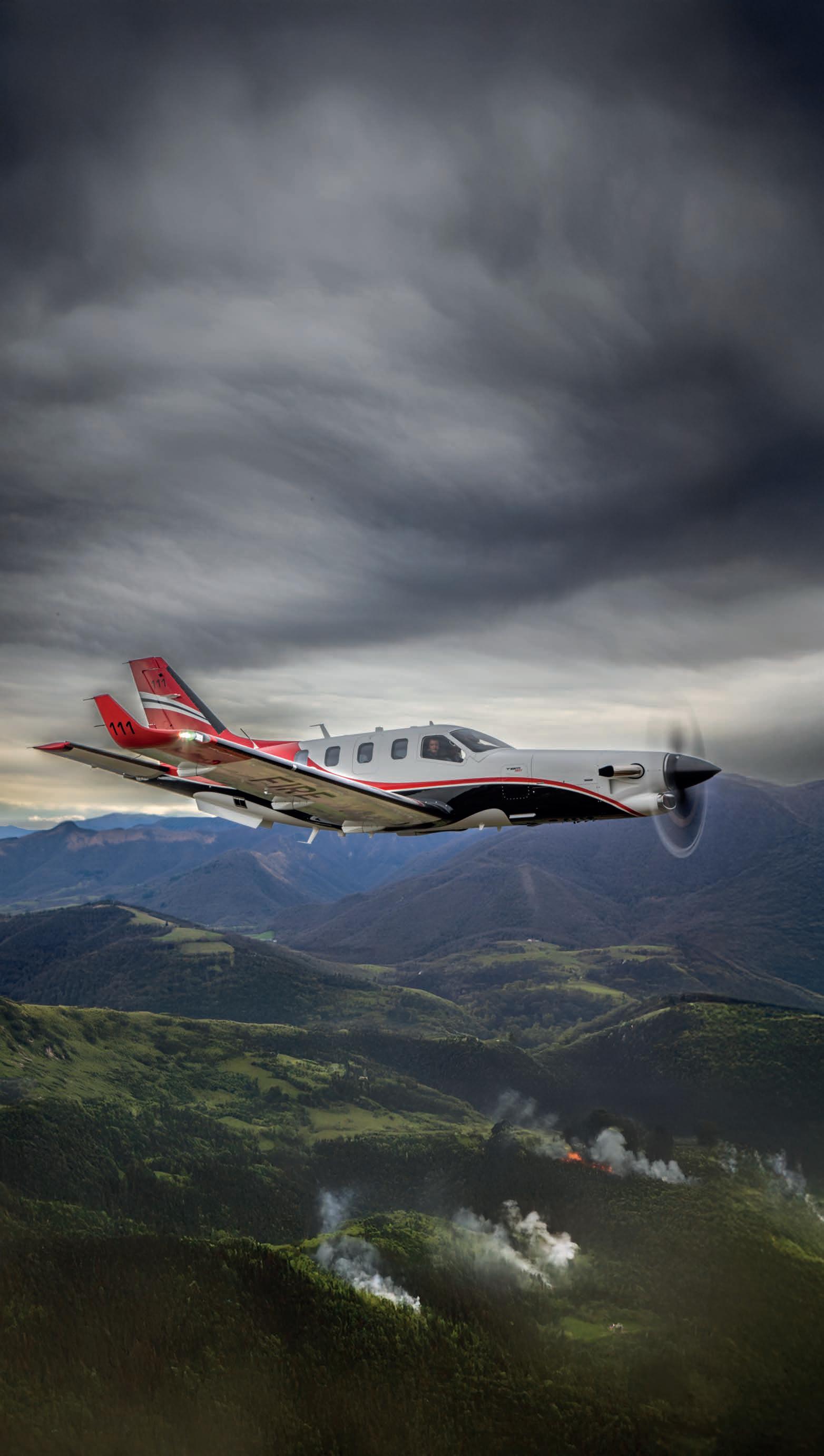
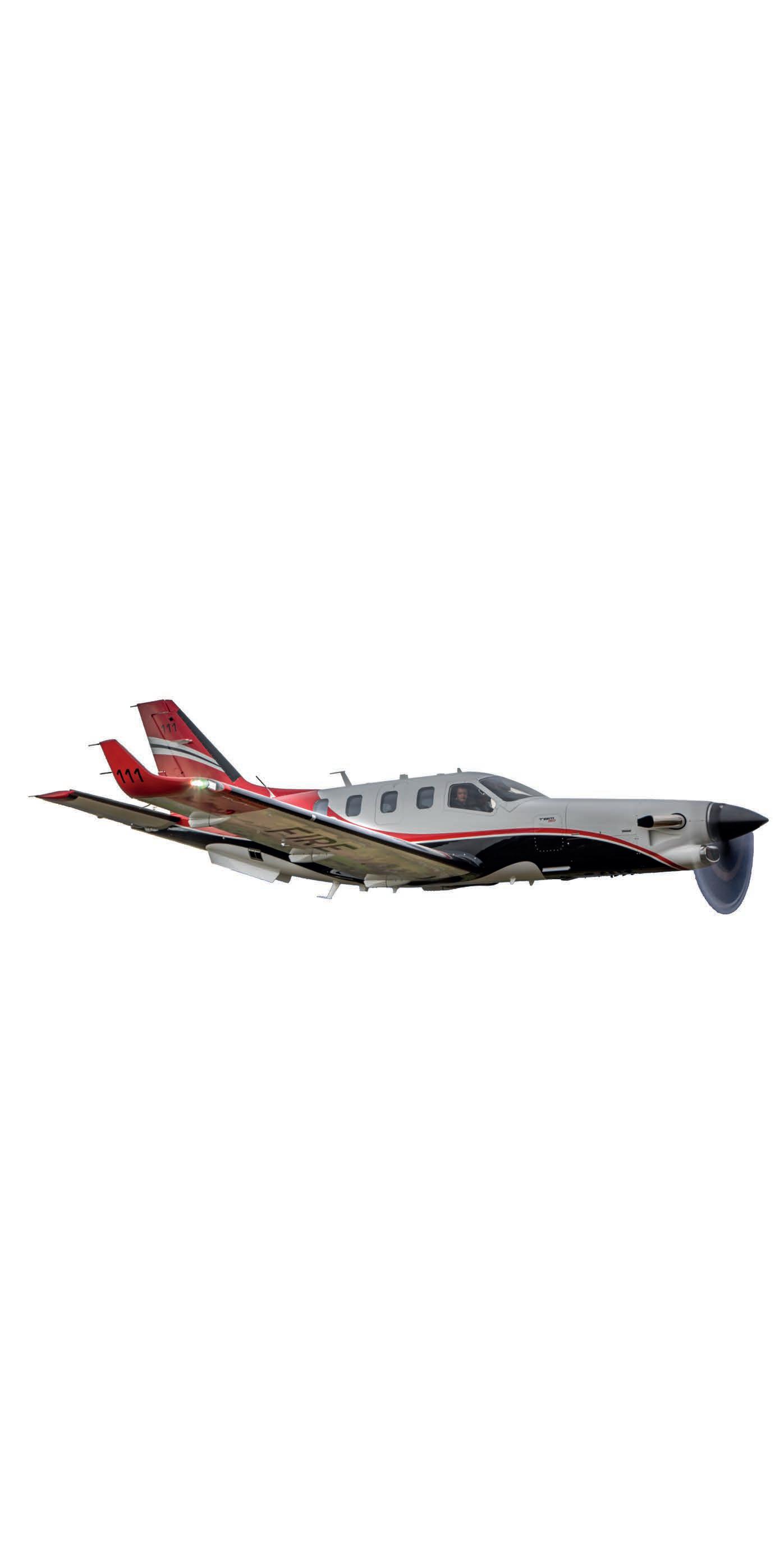
BY CHARLES ALCOCK
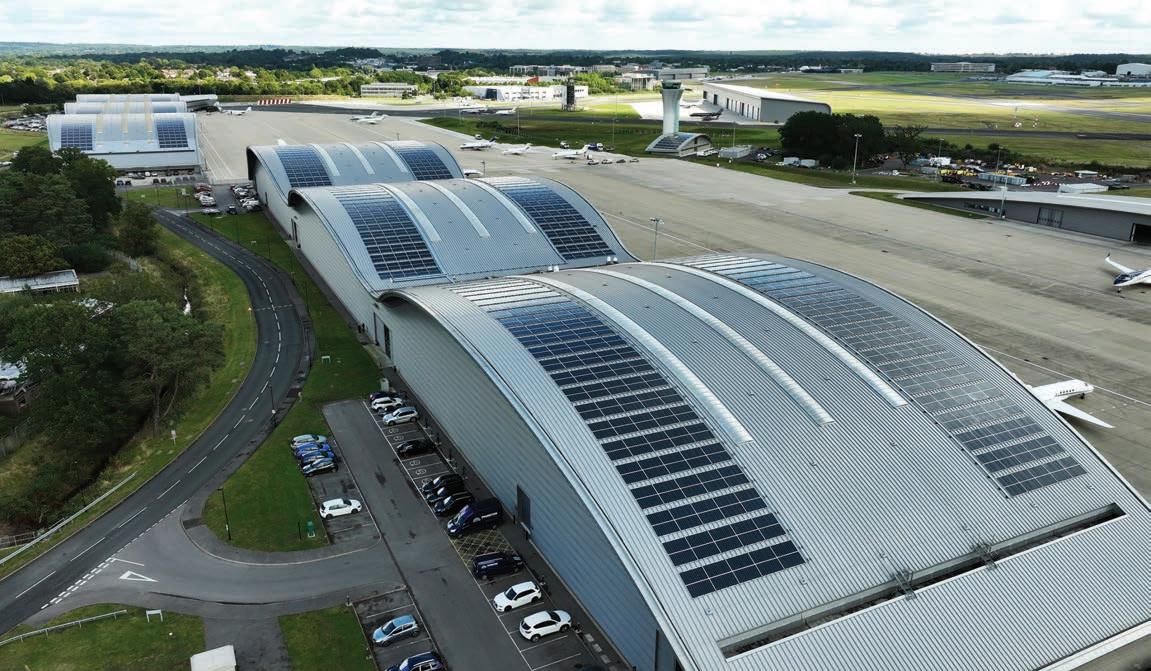
As the aviation industry steps up efforts to decarbonize, solar power is increasingly among the steps being taken by FBOs, airports, aircraft operators, and maintenance providers to move the dial. Solar panels are being installed at multiple sites as part of a wider approach to decarbonizing operations that also include improving the energy efficiency of facilities and enabling aircraft operators to have access to sustainable aviation fuel.
Last year, specialist supplier Solivus installed solar panels on the hangar roofs at the London-area business aviation hub Farnborough Airport. These are now meeting around 25% of the facility’s power
needs, and the company has made similar installations in the west of England at Cotswold Airport, which is also used by private aircraft operators, as well as supporting Air BP with infrastructure projects.
At London Biggin Hill Airport, Bombardier last year made a significant investment to install 3,000 solar panels across its 250,000-sq-ft service center. The photovoltaic system can generate more than 1.133 kilowatt hours of power, providing for around one third of the facility’s electricity needs and reducing its annual carbon emissions by up to 252 metric tons.
On the other side of the Atlantic, Signature Aviation has installed solar power
provision at 13 of its FBOs at U.S. airports. The ground handling specialist has installations at five more sites at various stages of construction, including at its UK base at London Luton Airport.
The Luxaviation Group’s FBO at Lanseria International Airport in South Africa makes extensive use of solar power. Panels have been installed on its buildings and some of its ground support equipment.
On March 26, Luxaviation introduced what it said is the industry’s first real-time carbon calculator as part of its private aviation services app. This now features live emissions tracking, as well as instant

carbon offset purchases and options to select blends of sustainable aviation fuel through the Europe-based group’s Green Legacy platform.
UK-based Solivus handles all aspects of installing solar power infrastructure, also taking responsibility for commissioning the equipment (including connections to the power grid), operations, maintenance, and reporting monthly energy generation. The group says it is seeing increased demand from the aviation industry.
According to Solivus’ business development manager and environmental advisor, Charlie Armitage, around 40% of commercial buildings cannot support the weight of the required number of solar panels. The company has developed lighter panels that equate to a weight of about 3.5 kilograms per square meter, compared with typical installations of between 10 and 15 kilograms.
Panel construction uses silicone wafers around 2 millimeters thick that are encased in polymer, compared with the more usual 2 centimeters. Importantly in airport environments, they are designed to minimize glare and glint with a surface that is wrapped in plastic. Armitage explained that Solivus bonds the panels directly to the roof surface with no penetration, which he said is advantageous for expensive or critical infrastructure.
Even in the UK—a country not noted for its high levels of bright sunshine— Solivus believes there is potential for solar power to cover higher proportions of energy needs if more panels were installed on buildings.
The company has looked at groundmounted panels at airports but found that customers were reluctant to commit out of concern that this might compromise future expansion plans.
According to Armitage, the typical payback period for customers investing in its technology is five to seven years, with the equipment covered by a 25-year warranty.
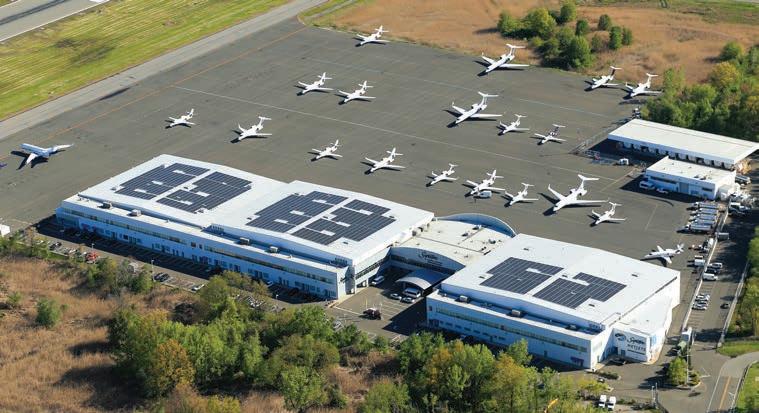
In some countries (but not the UK since 2019), solar customers get paid for electricity they supply back to the grid.
For FBO group Signature, solar power is a key facet of its roadmap to achieving netzero carbon by 2050. There are two interim steps, starting with cutting 29% of Scope 1 and 2 emissions by the end of 2025 and then achieving a 50% reduction by 2030. Scope 1 covers energy used directly by the company for applications such as running ground support equipment, while Scope 2 covers energy that a company buys from utilities to run its facilities.
Heather Frost, the group’s director of environmental and sustainability programs, explained to AIN that installing solar infrastructure at locations where it is appropriate is one of three main aspects of its “green power” strategy. It also purchases renewable energy where it is available from local utility companies—for example, in Colorado—and purchases credits for renewable energy, but only when it is solaror wind-generated.
Other green power initiatives at Signature include improving water-use efficiency at FBOs through measures such as improving the efficiency of heating and
air conditioning, installing insulation in buildings, and replacing windows. The company has also been electrifying its fleet of ground vehicles and increasing its use of carbon credits and offsets. In 2022, it achieved operational Scope 1 and 2 neutrality for greenhouse gas emissions across its global network.
According to Frost, the availability of solar power at the first 13 FBOs where Signature has made the investment has stabilized now. At all of these sites, it is now selling power back to the grid.
“I am proud to work for a company that is focused on taking action toward internal and external climate goals and that looks at how our achievements in this area impact airports and communities,” Frost commented. “Sustainability is viewed as a journey at Signature, and it is embedded in decision-making across the company. Collaboration within Signature and with industry leaders, regulatory agencies, and professional organizations is essential as we continue to make transformative changes and collectively work to decarbonize aviation.”
In recognition of its pioneering commitment to renewable energy, Signature received the prestigious Green Power Leadership Award from the U.S. Environmental Protection Agency in 2024. z






A proven predictive analytics system that forecasts the service you need—before you need it.




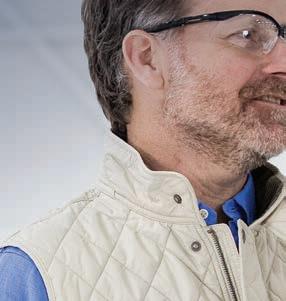




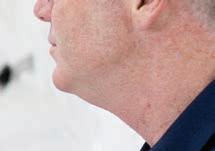










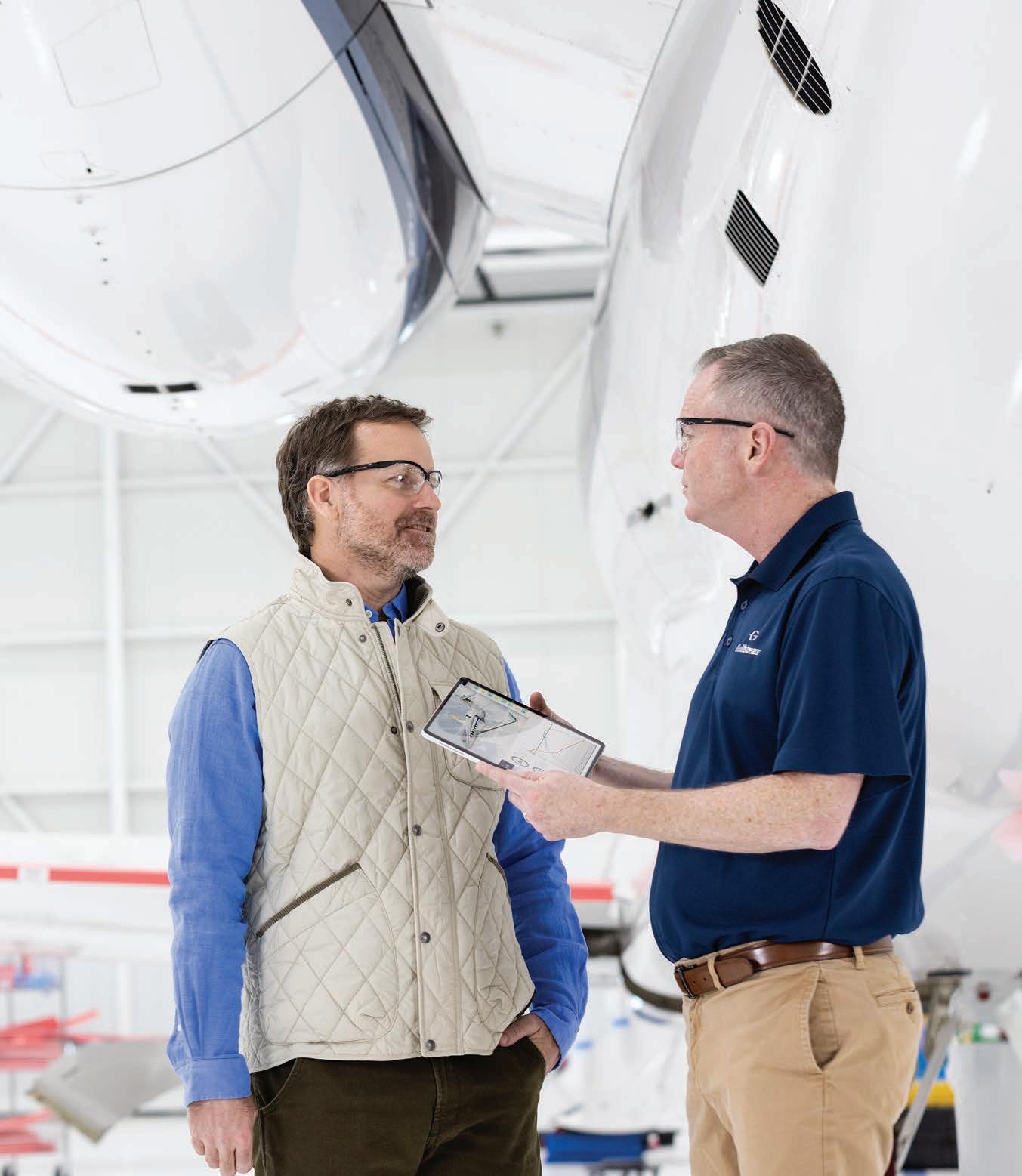
BY MATT THURBER
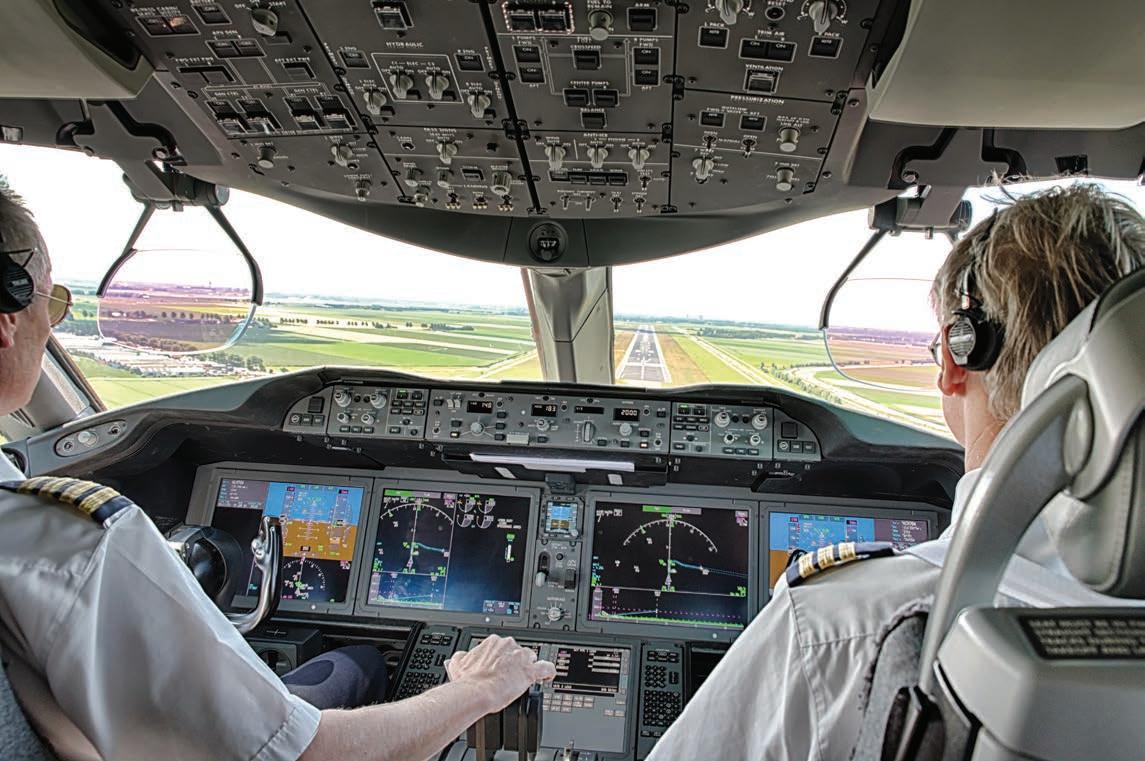
Notams should be limited to information that is important for safety, but that isn’t always the case.
Note: AIN is using “notam” as a word (not as the FAA uses it, as a contraction) per the International Civil Aviation Organization (ICAO) definition: “A notice distributed by means of telecommunication containing information concerning the establishment, condition, or change in any aeronautical facility, service, procedure, or hazard, the timely knowledge of which is essential to personnel concerned with flight operations.”
On the night of July 7, 2017, the flight crew of Air Canada Flight 759, flying an Airbus A320, lined up with San Francisco International Airport’s Taxiway C instead
of Runway 28R after being cleared to land. Four airliners were waiting on Taxiway C for takeoff, and the A320 kept descending toward them until it reached 100 feet agl and flew over the first airplane, then started a go-around. At its lowest point, the A320 reached 60 feet agl and was an estimated 10 to 20 feet above the second airplane in line before climbing away.
There was a notam for the closed parallel runway—28L. It was in the pilots’ flight release package and included in the airport’s ATIS flight information broadcast, which pilots must review prior to
arrival. The closed runway notam was on page eight of a 27-page briefing package in a section titled “Runway” and came after 14 clearly less urgent notams. Six of these were for OBST CRANE, none of which intruded into the flight path for Runway 28R. Two were for taxilane closures, three for taxiway closures, and one for taxiway CL LGT U/S, which means “centerline lights unserviceable” in notam-speak.
After all of these less urgent notams, the Runway section listed five notams that looked like the image on the next page.







Small items can end up causing big problems. Foreign Object Debris (FOD) of manmade and natural origins poses ingestion risk to engines and can hazard other aircraft systems if overlooked or allowed to be where it does not belong. It’s everyone’s job to stay watchful and be proactive. Make sure consumables and equipment are stowed and taken care of after maintenance. Then keep an eye out for other potential debris. No detail is too small to ignore when it comes to safety. If you see something, stow something.
Guard against FOD damage impacting your aircraft and organization. Mount this poster where it can serve as a visual reminder to stay vigilant for loose or unneeded items. Need more? Download free copies at usaig.com.
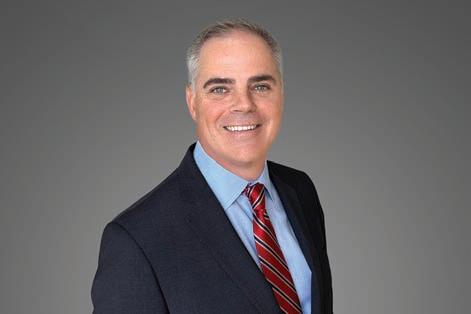
Thank you and safe flying!
Find out more about our coverage, our Performance Vector safety initiative or Performance Vector PLUS good-experience returns program. Contact us and we’ll connect you with an aviation insurance broker in your area.

John Brogan President and CEO, USAIG
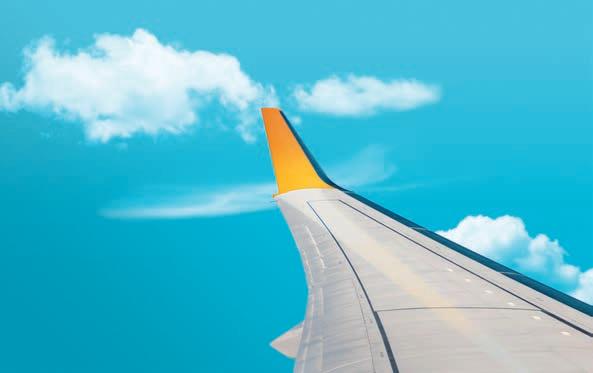

































Before you leave a hangar or parked aircraft, be on the lookout. Stray items you brought in such as tools, consumables or trash, as well as any introduced by other means, become Foreign Object Debris (FOD) hazards if left where they don’t belong. Your eyes and vigilance defend against costly aircraft damage and accidents.
Ensure consumables like rags, safety wire, and other items are removed after work.
Observe strict tool control and account for personal markers, penlights, multi-tools, etc. Avoid unneeded items in maintenance areas; discard packing and trash away from aircraft.
Check tarmac and fence lines often for manmade or natural debris that could become airborne.






































































































Even though the critical runway closure notams came after a set of useless notams, the importance of the closed runways was highlighted by the word NEW in red. Otherwise, there was no ranking of these critical notams that might have signaled to the pilots that there was something important that needed their attention.
In follow-up interviews about the incident, the first officer stated that he could not recall reviewing the specific notam that addressed the runway closure. “The captain stated that he saw the runway closure information, but his actions (as the pilot flying) in aligning the airplane with Taxiway C instead of Runway 28R demonstrated that he did not recall that information when it was needed,” according to the NTSB report.
According to the NTSB, “Features of the notam text emphasized the closure information, such as the use of bold font for the words ‘RWY’ and ‘CLSD’ and a ‘**NEW**’ designation in red font with asterisks before the notam text, as shown in figure 10.98. However, this level of emphasis was not effective in prompting the flight crewmembers to review and/or retain this information, especially given the notam’s location (toward the middle of the release), which was not optimal for information recall. A phenomenon known as ‘serial position effect’ describes the tendency to recall the first and last items in a series better than the middle items (Colman 2006).”
On the right is how ATIS Quebec looked as received via the aircraft’s onboard aircraft communications, addressing, and reporting system (ACARS). In other words, the pilots didn’t listen to information Quebec on the KSFO ATIS radio frequency but read it as an ACARS transmission. (The yellow section highlighting the runway closure is from the NTSB report, not the way it looked to the pilots.)
The report continued: “The ACARS message providing ATIS information Quebec, as displayed in the cockpit, was 14
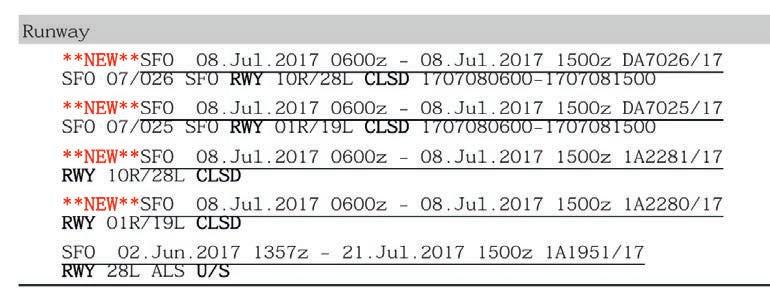
These notams were on page eight of a 27-page briefing package for the Air Canada flight.
continuous lines with all text capitalized in the same font. As shown in figure 11, the Notam indicating the Runway 28L closure appeared at the end of line 8 and the beginning of line 9. The uniform presentation of the ATIS information could have contributed to the flight crew’s oversight of the runway closure information.”
During a hearing on the incident, thenNTSB chairman Robert Sumwalt singled out what he called the “messed up” notam system.
Sumwalt claimed that the “crew didn’t comprehend the notams” and, as an example of the confusing notams pilots are faced with, read this complex entry from that same Air Canada flight’s briefing package, just one of the many for Toronto Pearson International Airport: “**72**YYZ 06.Jul.2017 1400z–31.Jul.2017 2200z 1Y1247/17 TWY AK, TWY R BTN TWY B AND TWY AT, TWY B BTN TWY B1 AND TWY R NOT AUTH TO ACFT WITH
“Why is this even on there?” he asked. “That’s what notams are: they’re a bunch of garbage that no one pays any attention to,” adding that they’re often written in a language that only computer programmers would understand.
Sumwalt also relayed a recent experience he had flying the jumpseat into North Carolina’s Charlotte Douglas International Airport, saying, “There were pages and pages and pages of notams, including one for birds in the vicinity of the airport… When are there not birds in the vicinity of an airport?”
The NTSB issued six safety recommendations to the FAA after the Air Canada incident, one of which—A-18-024—was to develop a “more effective presentation of flight operations information to optimize pilot review and retention of relevant information.” So far, that recommendation’s status remains “Open—acceptable
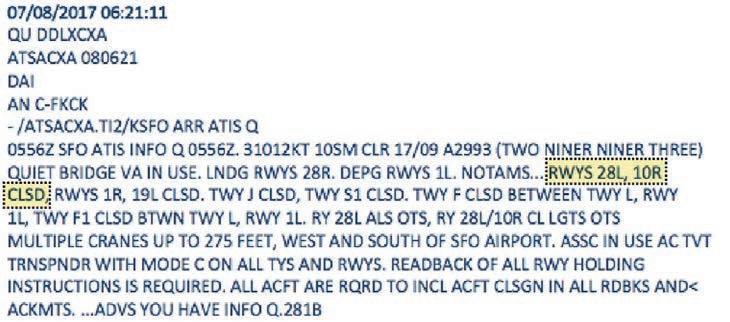
The ACARS-delivered ATIS Quebec, with the closed runway information (NTSB highlight).
response.” This means that the FAA has indicated it would, but has yet to comply with the recommendation, eight years after the near-collision and seven years after the NTSB recommendation.
In fact, notams are not supposed to be used for information that might be considered normal—for example, birds in the vicinity of an airport. Such a notam provides no useful information because birds move around, and there is no way to assess the level of risk involved, other than the normal watch for potential hazards such as birds.
According to an FAA presentation for airport managers, “A notam is a notice containing information essential to personnel concerned with flight operations but not known far enough in advance to be publicized by other means. Notams concern the establishment, condition, or change of any component (facility, service, procedure, or hazard) in the NAS [National Airspace System]. They must state the abnormal status of a component of the NAS—not the normal status.”
There is plenty of guidance for those responsible for creating notams. The foundational instructions come from the ICAO, which sets standards for member states to implement. ICAO’s guidance still advises the use of contractions and capital letters, which are leftovers from the days of teletype machines when bandwidth was extremely limited.
For reasons that aren’t entirely clear, ICAO and the world’s aviation authorities have continued with this protocol. The FAA requires that “Contractions and abbreviations designated for ICAO usage as specified in FAA Order JO 7340.2, Contractions, and ICAO Document 8400, ICAO Abbreviations and Codes, must be used in the notam system. When an ICAO usage contraction is not available, plain text is required, except for the list of differences in Appendix C.”
ICAO’s documentation lists common terms and their coding information and
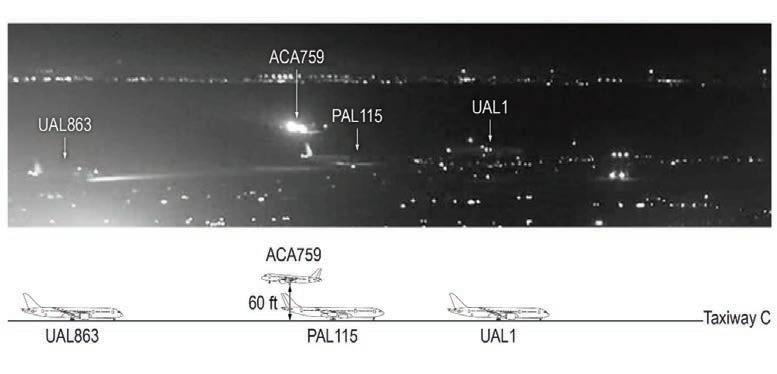
“uniform abbreviated phraseology” to help those who submit notams. However, this isn’t a perfectly clear process, and there is room for confusion.
For example, the contraction “act” can mean two things in ICAO-speak: when used by itself, it means “activated,” but when preceded by the word “volcanic,” it means “activity.” To add inconsistency, the word “deactivated” is not abbreviated to something like “deact” but is spelled out in full. A word like “canceled” is contracted to “cnl,” which is hardly intuitive. Yet “prohibited to” is spelled out instead of contracted to something like “phbto.” Runway centerline lights are “rcll” while other mentions of lights use the contraction “lgt” like “twy cl lgt” for taxiway centerline lights.
The FAA seems to think that this is a good idea. From the notam presentation: “Notams have a unique language characterized by the use of specialized contractions. Contractions are imperative to the notam structure because they make communication more efficient and allow computer systems to parse important words.” It is not clear how the inconsistent use of contractions makes it easier to parse important words.
Notams are so important—even though many are not considered essential for
aviation safety—that the FAA paused domestic airline departures for an hour and a half when the U.S. notam system shut down on Jan. 10, 2023. The problem was due to a contractor who “unintentionally deleted files while working to correct synchronization between the live primary database and a backup database,” according to the FAA, which added, “The FAA made the necessary repairs to the system and has taken steps to make the notam system more resilient.” Yet since then, the FAA had to inject delays into the system on Feb. 1, 2025, due to another outage, this time reportedly a hardware issue, and again on March 22.
Thousands of new notams are generated each day, and tens of thousands are in various databases. Efforts to make the notam system work better frequently mention starting with those who write the notams, claiming that the system’s problems originate with poorly coded Notams or ones that simply shouldn’t have been submitted in the first place.
ICAO points out on its NOTAMeter website that simply removing old and obsolete notams would instantly reduce the number of notams in the database by 20%. NOTAMeter is a tool to analyze the age of notams submitted by the 193 ICAO member states. Unfortunately, the NOTAMeter tool is
not current. The last date for which data was published is July 1, 2023, and at the time, it said there were 34,733 notams in the world. A list shows how many old notams exist for each state, with some of the highest numbers from countries in Africa. Yet even the U.S. and France have a significant number of old notams, 13% and 13.3%, respectively.
ICAO has launched a notam improvement project, with the following goals intended to help civil aviation authorities and data originators: using ICAO’s NOTAMeter to analyze a state’s notams, identify old notams and cancel or replace them, or simply update aeronautical information products; delete non-compliant notams; come up with procedures to prevent inputting of non-compliant notams; and examine training and competency of notam personnel.
Notably, the above attempts to address the problem from the notam submission angle. Some in the industry thought there might be a better way.
In February 2023, after the U.S. ground stops due to the Notam system failure, OpsGroup convened a team to answer the question, “What do pilots want” from notams. In May, OpsGroup brought together 300 people for a “Notam Sprint,” a five-day effort to “Design a prototype system to post-process notams, tag them, summarize them, and then sort/filter into a newly designed briefing package.”
One of the team’s earliest realizations was that it would be impossible to fix the problem from the bottom up just by brute-forcing the correct submission of notams and by trying to get notam submitters to do a better job. The real challenge— and the resulting epiphany—was figuring out how to make more effective use of the existing notam system.
This addresses a fundamental truth about the slow notam improvement efforts by CAAs: anyone is free to do with notams
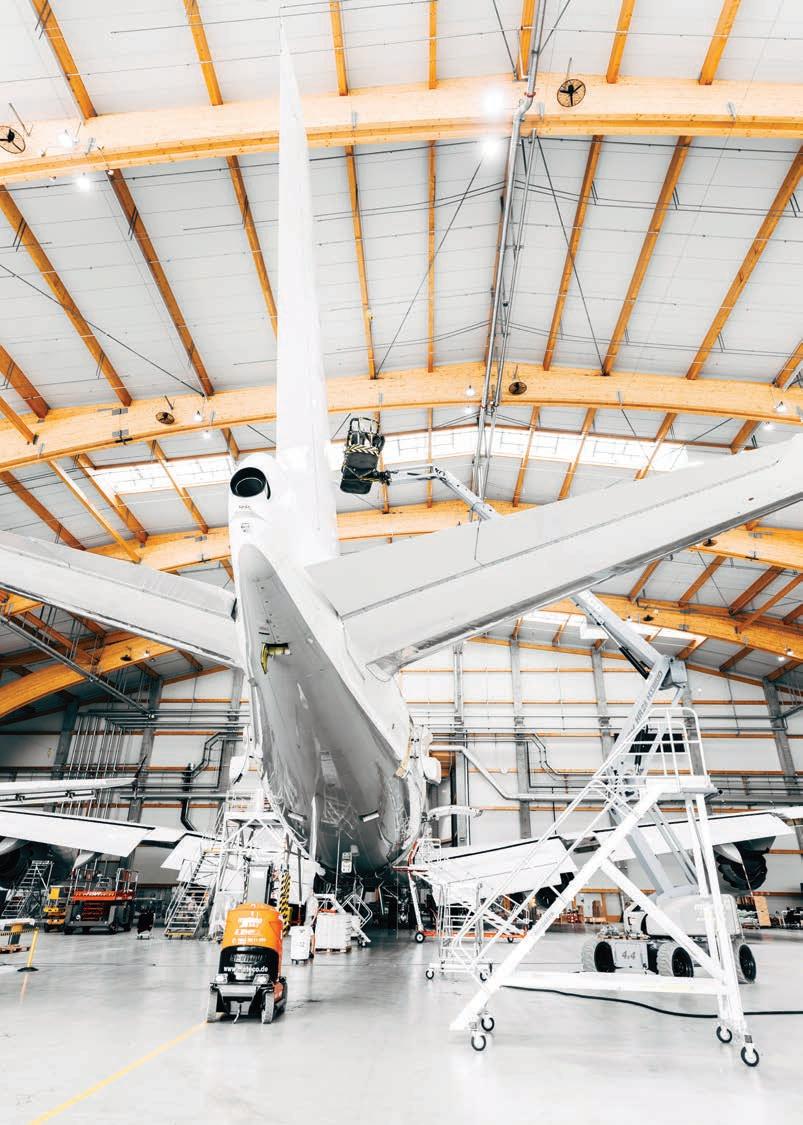
what they will. CAAs can create their own improved notam systems, building off the existing database. Electronic flight bag app developers can build notam transcription and organization features into their apps, putting the important notams at the top of the list, highlighting them, and turning them into readable plain English, even using uppercase and lowercase letters that are proven to be far easier to read than all caps. ForeFlight, for example, does this with notams that are tied to specific airports.
An airline or flight operation can even use software tools that OpsGroup helped develop to run their own notam improvement programs. A key result of the Notam Sprint was the creation of a categorization system that puts important notams at the forefront and delegates nearly useless ones (“dark notams,” as OpsGroups calls them) into an appendix.
“It doesn’t solve it at the back end (the notam office),” OpsGroup explained, “but it doesn’t need to, anymore. Until this year, we were all convinced that the only way to fix notams was to change the way notams are issued by notam officers, perhaps adding a tag to each one so we could organize them better. But AI has launched a cannonball of change into the aeronautical information sphere. Notams are just the start of the change we can expect to see.”
For the Notam Sprint testing, the team created an application programming interface that demonstrated the benefits of its approach, and airlines and aircraft operators could build on that if they wished. More work needs to be done, according to OpsGroup founder Mark Zee, but the Notam Sprint team’s efforts at least point the way to a solution.
The FAA did respond to the NTSB’s recommendations following the San Francisco near-collision and said, “We will continue to share our progress towards notam
modernization with our aviation industry stakeholders through periodic briefings.” The agency gave three private briefings to then-NTSB vice chairman Bruce Landsberg on Aug. 19, 2019, Dec. 19, 2019, and Nov. 12, 2020. On Dec. 13, 2022, the FAA briefed the industry-led Aeronautical Services Reform Coalition. Finally, the FAA promised to provide updates online, but the link it provided is now dead.
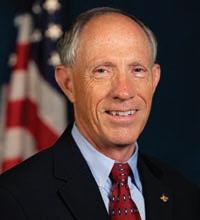
LANDSBERG FORMER VICE-CHAIRMAN, NTSB
AIN contacted Landsberg to ask about the results of those briefings, and basically, nothing happened. “I have been doing battle in this little corner for a quarter of a century,” he said, “and I feel like Charlie Brown and Lucy and the football [a cartoon where Lucy endlessly promises to let Charlie kick the football then lifts it at the last second so he misses] saying, ‘We’re going to fix it; this time we really mean it.’”
Landsberg flies his airplane frequently from Georgia to north of Washington, D.C., and complained of seeing notams in his preflight briefing that “have nothing to do with the flight. On my flights north, I routinely get something like laser lights at Disney World because it’s part of Jacksonville Center [airspace].
“I was almost certain that after the incident in San Francisco [this would be fixed]. Had the Air Canada airplane actually landed on the taxiway, it probably would have been a bigger accident than Tenerife,” where two Boeing 747s collided on the ground as one was taking off in foggy
conditions. While he wasn’t on the board when the Air Canada incident occurred, the fact that the NTSB did a major investigation on an incident in which no one was injured and no damage occurred was significant. “They missed the tail [of one of the airplanes on the taxiway] by something less than 20 feet,” he said.
“I thought after that [incident], the notam business and whole system would start to make sense because we were within 20 feet of having a humongous fireball.”
Over the years, Landsberg has seen congressional mandates and industry working groups try to tackle the notam problem. “And then nothing happens,” he said.
How notams are disseminated and organized is a fundamental problem, Landsberg said. He likes to quote former FAA associate administrator for aviation safety Nick Sabatini, who said about notams: “If everything’s important, nothing’s important. You can’t have everything hair- onfire top priority because it gets lost in the clutter.”
As for notams’ contractions and allcapitals presentation, he added, “There are hundreds of contractions; some are obvious, and some are obscure. I like to remind my friends at the FAA that the teletype is not coming back.”
Fundamentally, he explained, “We get so bogged down in the process, we forget what this is all about: coming up with something to let pilots know about operationally pertinent items. If it’s an unlit something or other, if we’re day VFR, we don’t need to know it’s missing a couple of lights. We can parse these at a pretty basic level and probably eliminate 70% of the garbage.”
There has been progress on responding to the Notam Improvement Act of 2023. The industry task force formed to address the act’s mandate just released the results of
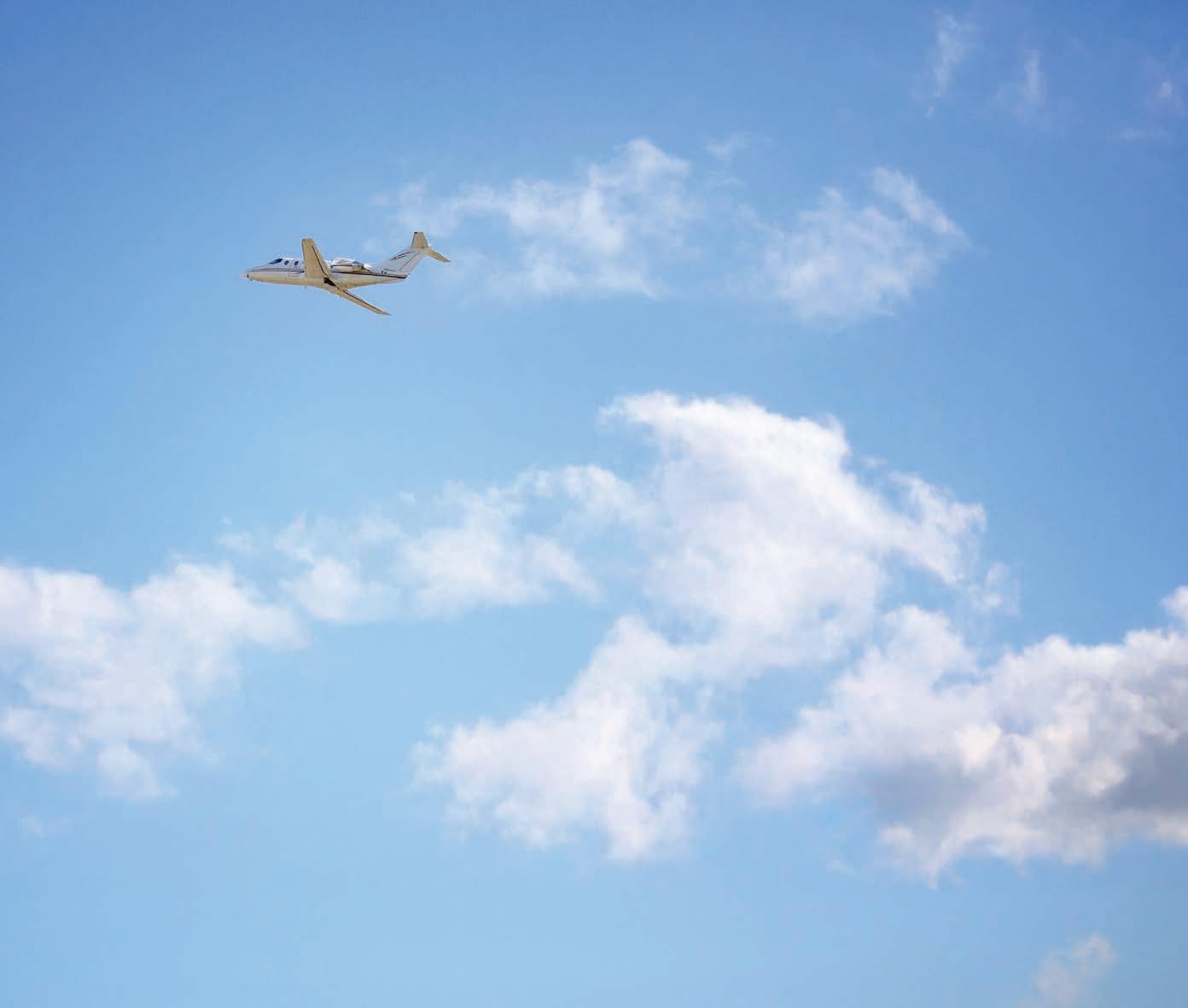

With AvfuelZero, we guide your path to sustainability—assessing emissions, setting targets, creating a reduction plan and delivering clear reports.
Let our ESG experts simplify your journey to net zero so you can stay focused on the flight.


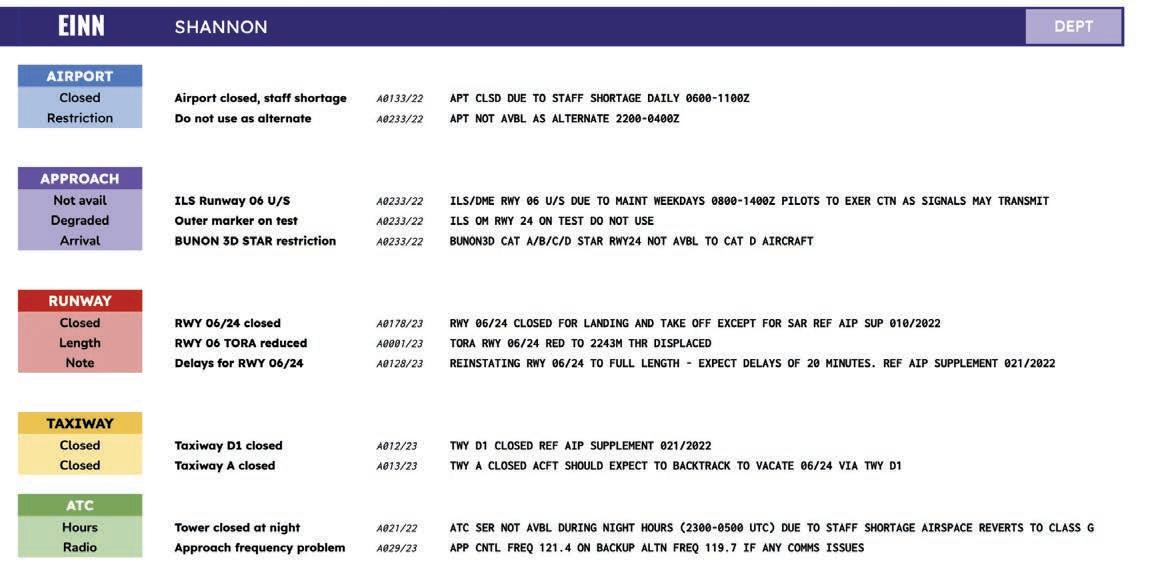
its work, although the report was finalized on January 3.
The task force found: “The current management of notams faces challenges, including a high volume of notices that can obscure crucial information, complex formatting that may lead to misunderstandings, and the potential for critical data to be buried within lengthy messages.” The report includes 41 “actionable recommendations.”
The task force included FAA and industry people as well as subject matter experts (SMEs). Industry members came from associations, airlines, other companies, and academia.
In the 50-page report, the recommendations did address issues raised by the OpsGroup Notam Sprint team. There were five primary focus areas addressed by workgroups covering: notam processes, standardization, human factors, FAA-industry engagement, and system resiliency, stability, and security.
Some of the notable recommendations include:
— The FAA should develop protocols that allow for third-party prioritization, sorting, and filtering of aeronautical information and attaching critical flags, enabling users to focus on essential data first.
— The FAA should, following the sunsetting of the U.S. notam system, begin transitioning tower light notam data out of the notam system and into its own digital aeronautical data application.
— The FAA should expand the provision of geospatial data to smaller airports previously not surveyed to provide pilots with graphical displays of notams containing location-specific information.
— The FAA should ensure that notams are designed according to human factors principles to increase the ability to process, comprehend, and retain the information.
— Users, including pilots who receive notams via a company-issued flight packet, should be able to customize and search notam information based on their individual needs, and the system should allow for this customization through an intuitive interface.
— The FAA should create a centralized, publicly available portal containing all relevant aeronautical information.
— The FAA should ensure that the notam system is designed with open architecture to allow for the adaptation of new and emerging technologies.
— [Notams should] use plain English instead of contractions/abbreviations. There is much more to the report. However, there is no assurance that its recommendations will be implemented. The task force believes that its work, if completed, will satisfy the NTSB’s recommendations in A-18-024. The task force also urged that “A dedicated FAA/industry working group should be established within 180 days of the sunsetting of this Task Force to ensure continued collaboration and improvement of notams. This body…should collaborate as the FAA initiates work to ensure that all notams contain actionable information, defined as operationally significant information that pilots and flight planners can assimilate easily, quickly, and accurately.” z
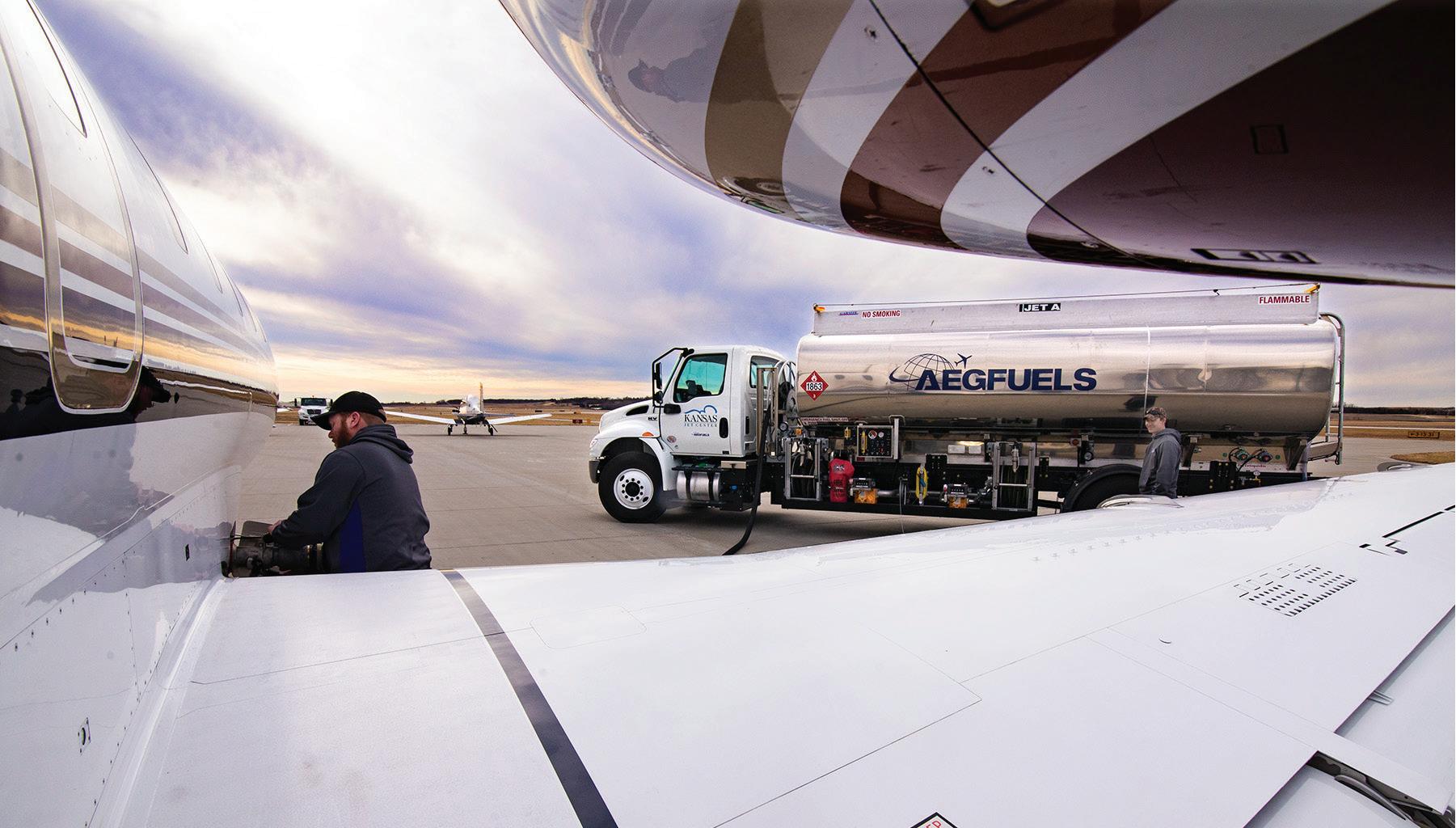


BY KERRY LYNCH
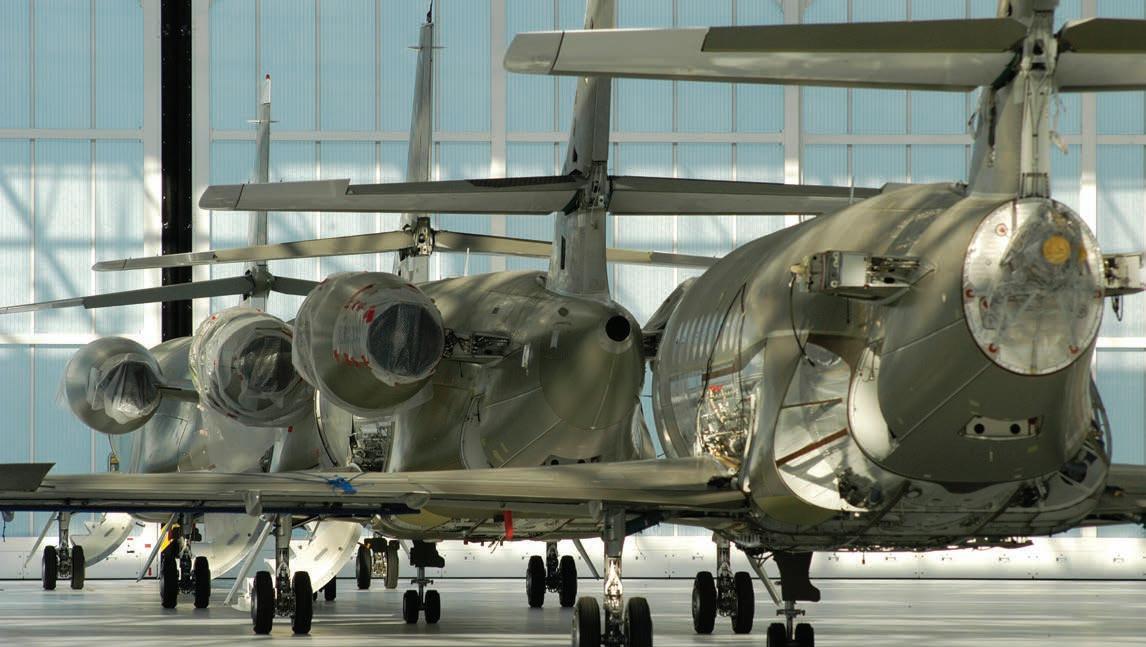
A year after the FAA released its final rule mandating charters, air tours, and manufacturers to adopt safety management systems (SMS), industry leaders are starting to see interest pick up from affected operations, in part as they lay the groundwork to come into compliance. But, in addition to a drive for compliance, they also began seeing an uptick for an unexpected reason—the people in the back of the aircraft.
The agency on April 26, 2024, mandated SMS for Part 135, air tour operators, and manufacturers (those with a type and production certificate), establishing a deadline of May 28, 2027, for compliance. That is the date when operators must submit their declaration of compliance, meaning they have SMS fully implemented.
Some companies have been spurred into action because of the mandate. Justin Raymond, director of operations in the Americas for Web Manuals, said his company has seen “a significant rise” in business aviation operators and manufacturers looking
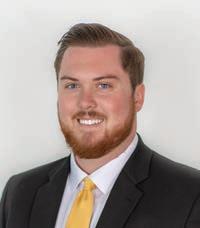
JUSTIN RAYMOND DIRECTOR OF OPS IN THE AMERICAS, WEB MANUALS
for SMS support. He cited the FAA’s final ruling as largely driving this trend.
But also, one of the ripple effects from the high-profile accidents that have brought a spotlight on aviation safety this year is that passengers have started to question the safety standards of their operations, noted Bryan Burns, president and CEO of the Air Charter Safety Foundation. As such, ACSF, which administers an SMS program for its members, has seen inquiries increase in that area.
“What we’ve discovered in the last couple of months with the activity surrounding recent accidents,” said Burns, “is that passengers that are in the back of these corporate aircraft are asking pilots: ‘Hey, what’s this about SMS? Hey, what am I

hearing about ASAP [aviation safety action programs], data monitoring, and the term ‘just culture?’”
He likened the scenario to two decades ago when industry audits began to take root. Passengers saw that companies were advertising that they had met the high standards and began to ask whether their operator was also participating in that: “‘Are we doing this? Are we mitigating and managing our risks?’”
This comes as media coverage has particularly intensified since the January 29 midair collision between a PSA Airlines CRJ700 and U.S. Army Black Hawk near Ronald Reagan Washington National Airport. That was followed within weeks by fatal accidents in Philadelphia and Scottsdale, Arizona. “Whether it’s an incident or an accident, fatal or nonfatal, it’s on the news every day, somewhere, someplace,” Burns added. “And that has triggered just a lot of questions.”
For manufacturers, the mandate has been an imperative. SMS has received substantial attention on Capitol Hill, particularly in the aftermath of the Boeing Max crashes. The mandate was something manufacturers pushed for as they faced other proposals that could have substantially altered the certification process.
However, most manufacturers have long been on board, regardless, noted Walter Desrosier, GAMA’s v-p of engineering and maintenance, noting that the International Civil Aviation Organization has had standards in place for years.
While many have pieces of an SMS, Desrosier said that does not mean the manufacturers are in compliance with the final rule as written. They are assessing the requirements to see where it might differ from where they are, conducting a “gap analysis,” he said.
The FAA also said it is seeing the number of operators proactively implementing SMS continue to climb.
However, the mandate and the deadline are raising numerous questions. Chiefly, will an already strained staff at the FAA be able to keep up with the requirements that were extended to 2,500 more operators? And, how will a small operator—particularly those with a single aircraft, few staff, and few resources—comply?

BRYAN
BURNS PRESIDENT AND CEO, ACSF
Whether it’s an incident or an accident, fatal or nonfatal, it’s on the news every day, somewhere, someplace...
The benefits of SMS have been well documented and endorsed by many industry associations, which have long advocated for the programs and key elements of SMS, such as just culture and data analysis.
Web Manuals’ Raymond noted that in addition to the simple mandate, companies are coming on board because there is “an industry-wide recognition that proactive safety management is essential in reducing operational risks. Many operators are realizing that traditional, manual processes are no longer suitable in the industry’s evolving landscape.”
He also sees a broader industry shift toward data-driven safety reporting and just culture, key elements of SMS.
Desrosier pointed out that many of the elements of SMS are not new to manufacturers, and the reasons behind the FAA and ICAO mandates are the “very same reason that we as manufacturers have been looking at this all along.” In fact, the manufacturers played a role in helping to design the global standards.
About one-third of ACSF’s members have either incorporated or at least started the process of adopting an SMS, Burns noted. But these operations are the ones that are taking the time and investing in a safety organization, likely more predisposed to SMS programs.
Even so, Burns was encouraged by the inquiries the association has been receiving, including the helicopter operators that have reached out through its partnership with Vertical Aviation International.
This is critical given the vast number of operations that need to adopt the program in just two years, including getting it in working order and ready for submission of the declaration of compliance, Burns said.
“What you don’t want to do is wait and then submit some kind of document or manual without having potentially demonstrated between now and May of 2027 that you’ve got a program in place and it’s measurable, it’s quantifiable, and it’s working. Don’t wait until a few months before the deadline and think you’re going to put something together that’s going to be effective,” he said.
GAMA’s Desrosier agreed. Noting there are two years left for compliance, “It’s going to take all of that to effectively and successfully implement [SMS]. We encourage a process where the companies bring in the culture, they bring in the processes, and they bring in the non-punitive

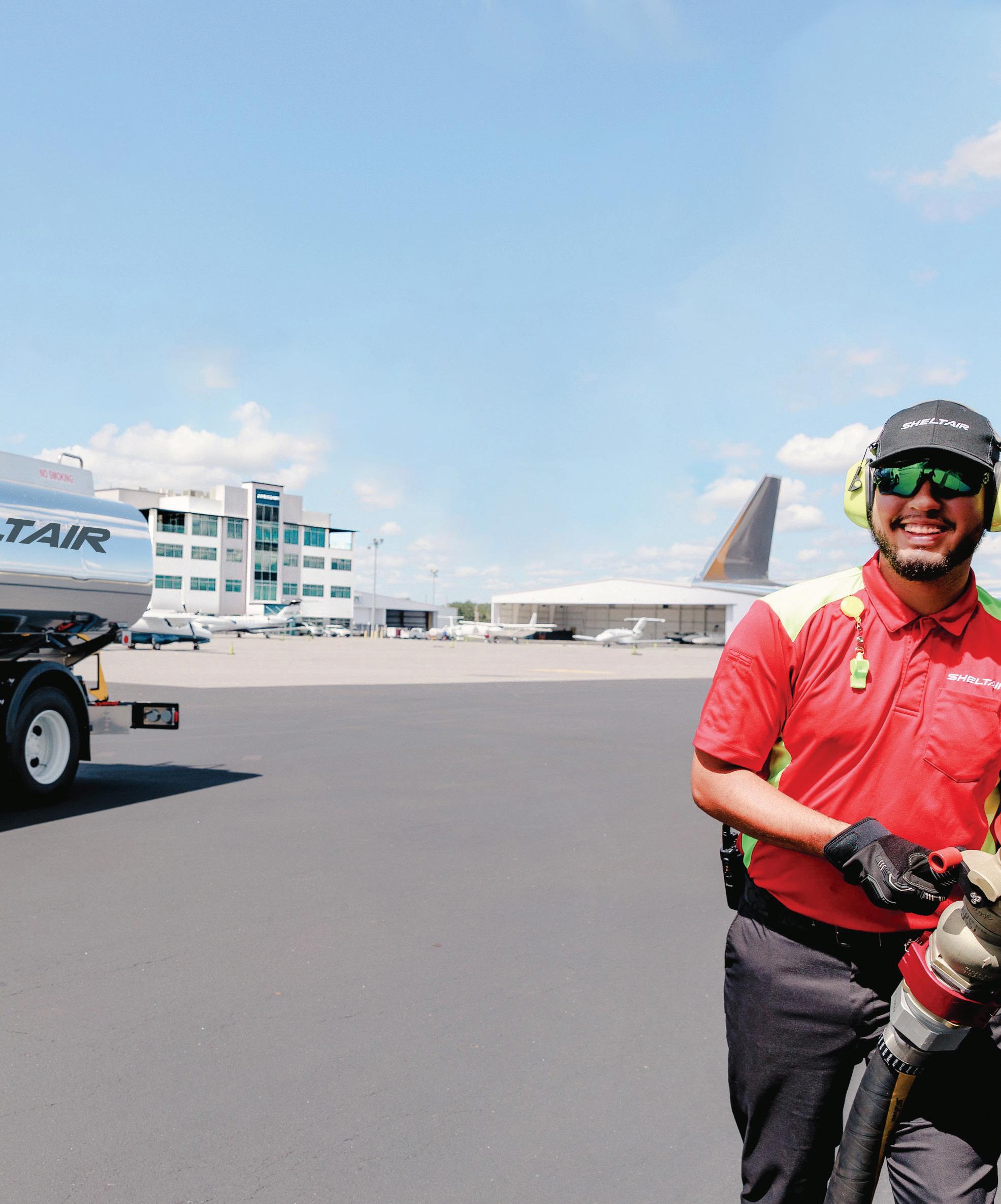
From the moment you arrive, there’s a difference you can feel—and this year, the industry felt it too. In the 2025 AIN FBO Survey, ten Sheltair locations ranked in the top 20%, with seven teammates honored for going Above & Beyond. Whether you’re arriving for a quick turn or seeking a longterm base, our award-winning service and premium facilities are built to support every mission.
Discover more at sheltairaviation.com.
reporting, which all takes time. You don’t just turn that on overnight.”
However, numerous barriers still stand between getting operators on board, but primarily time and resources, Burns said. “Having internal staffing to dedicate to getting through this process is the num ber-one issue.”
Doug Carr, NBAA senior v-p of safety, secu rity, sustainability, and international affairs, agreed, saying this is particularly true as the industry grapples with how to get the smallest operators on board. Carr noted that aware ness is not an issue—most operators have heard of SMS and are aware of the mandate.
But learning how to implement SMS and how it can apply to a one-aircraft oper ation or a small staff where there aren’t resources is an issue.
Burns agreed. “We find ourselves in this constant education process.” He noted that that’s why ACSF developed a scaled-down version of its Industry Audit Standard— IAS Lite—because the original wasn’t accessible for small operators. It also rolled out an SMS platform to facilitate this for small operators.

“Our whole focus was around making it simple, customizable, and a key to a lot of this—low cost,” adding that this was created with the entry level in mind “because they lack time and resources.”
Web Manuals has been working toward that goal as well, said Raymond. “Unlike larger operators that have dedicated compliance departments, smaller operators often have limited resources and personnel managing multiple regulatory requirements. This can increase the complexity of SMS implementation,” he said, noting that his company is working with all sizes of operators.
“Web Manuals’ goal is to make SMS management as straightforward as possible. An effective SMS should scale over time as the operation grows, building on existing processes.”
With an eye on concerns around implementation, the National Air Transportation Association (NATA) is planning a series of forums to help prepare Part 135 and air tour operators, as well as provide better insight to the FAA on their struggles in meeting the requirements. The association is looking at potential locations and timing that would best fit operator schedules, as well as other events where it could reach the larger community.
These forums come on the heels of the 135 SMS Roundup event the association held earlier this year, focusing on topics such as building safety culture and employee engagement, as well as using technology and learning about case studies.
Importantly, the sessions fostered a dialogue between the FAA and operators on areas that were unclear or concerning, said Jenny Ann Urban, v-p of regulatory affairs for NATA. The overarching theme was to help operators understand the need to be prepared for the May 2027 deadline for the submission of their declaration of compliance.
“You need to design and implement your SMS before submitting your declaration of compliance because once that’s submitted, even if you’ve submitted ahead of the deadline, you’ve entered into a regulatory environment where they can come and inspect you,” Urban said.
Also important at the forum was to include representatives from larger operators that have already adopted past voluntary SMS programs or submitted their declarations of compliance. They were on hand not only to share best practices with smaller operators but also to learn from each other, Urban noted. A key theme emerging among them was that safety is not a competition, but rather it’s better for the industry as a whole when everyone is incorporating best practices and sharing information.
As far as the FAA officials there, they had an opportunity to hear questions on how the SMS programs will be reviewed and inspected, as well as concerns that different inspectors may have different
15 - 17, 2025

“The AIN CALS event has been a refreshing experience for leaders within the corporate aviation community and the vendors that support their businesses. 100% engagement for 2.5 days. Truly a working event that leaves us all a bit tired but very enthused!”
– 2024 CALS FLIGHT DEPARTMENT ATTENDEE
“The AIN CALS event provides excellent opportunities for high level interaction between vendors and clients. The one-on-one time and small group sessions are very valuable settings.”
– 2024 CALS SPONSOR

expectations. A key message impressed by operators was the importance of inspectors being trained and understanding the rules. Particularly important was that inspectors evaluate for compliance but do not dictate how to get there.
Among the questions was whether the FAA could keep up with the mandate alongside industry. Regulators are hoping—and starting to see—that many will seek approval for their declaration in advance. But there is a prevailing concern about a rush right at the deadline.
FAA officials indicated that they were paying attention to these and other concerns and were using that information as they train and educate their workforce to oversee the SMS process.
“People get a little overwhelmed with SMS, but if you already have management systems in place, you don’t have to reinvent the wheel. You can utilize that,” Urban said, stressing that SMS will be different for every operator.
Every operator has different risks and different safety analyses. This is why it is important to have the regulators understand the industry and make sure SMS is scalable, she said. Operators need to understand what fits and works for them.
But all of this points back to how the FAA will manage this. Carr noted that the FAA has indicated it may fold SMS into its regulatory inspections of the carriers.
The FAA told AIN it is now in the “final process” of publishing guidance on SMS maturity and how its employees will be instructed to
conduct performance-based oversight.
The agency further noted it has added briefings for its workforce to prepare them for oversight of SMS and developed enhanced oversight tools to help inspectors evaluate and document the effectiveness of an SMS program. In addition, the agency pointed to an array of other efforts such as videos, a frequently asked questions document, and FAA Safety Team (FAASTeam) briefings.
“We have recognized that there is still some confusion regarding development and implementation of SMS, so the FAA has leveraged our partnership with industry to champion SMS,” the agency said, including participating in a number of industry events “to dispel the mystery around SMS for those service providers who are new to the conversation.” z
BY AMY WILDER
A series of recent runway incursions and near-collisions has reignited urgent discussions about surface safety at U.S. airports, with regulators, industry groups, and manufacturers calling for new technologies and procedures to address what the NTSB has called a critical risk.
According to FAA data, the number of reported U.S. runway incursions—defined as the incorrect presence of an aircraft, vehicle, or person on the protected area of a surface designated for landing and takeoff—has hovered around 1,700 annually for the past three years. In 2024, the agency recorded 1,758 incursions, nearly matching 2023’s total of 1,760 and continuing an upward trend from a pandemic-era dip in 2020 and 2021. The totals also are similar to the tally 2019 but are double of those recorded 25 years ago.
Although most incidents fall under Category C or D (ample time/distance to avoid a collision or no immediate safety impact), a growing number of high-profile Category A and B events—where a collision was narrowly avoided or risked— have captured national attention. These include close calls at New York John F. Kennedy (KJFK), Texas’ Austin-Bergstrom (KAUS), and Ronald Reagan Washington National Airport (KDCA).
Each day, U.S. air traffic controllers handle approximately 45,000 flights—more than 16 million a year. With the steady rebound of travel post-pandemic, flight volumes are back to pre-2020 levels. Busy commercial hubs such as in Atlanta (KATL), Los Angeles (KLAX), Dallas-Fort Worth (KDFW),
Denver (KDEN), and Chicago (KORD) see the highest volumes, but not all incursions happen at the busiest airports.
FAA data shows that pilot deviations are the primary source of incursions, accounting for roughly two-thirds of events. The remaining are split between air traffic controller operational errors and vehicle or pedestrian deviations.
As defined by the FAA, runway incursions are categorized by severity:
— Category A: Serious incident; collision narrowly avoided.
— Category B: Significant potential for collision.
— Category C: Sufficient time/distance to avoid collision.
— Category D: No immediate safety consequences.
(Surface incidents, distinct from runway
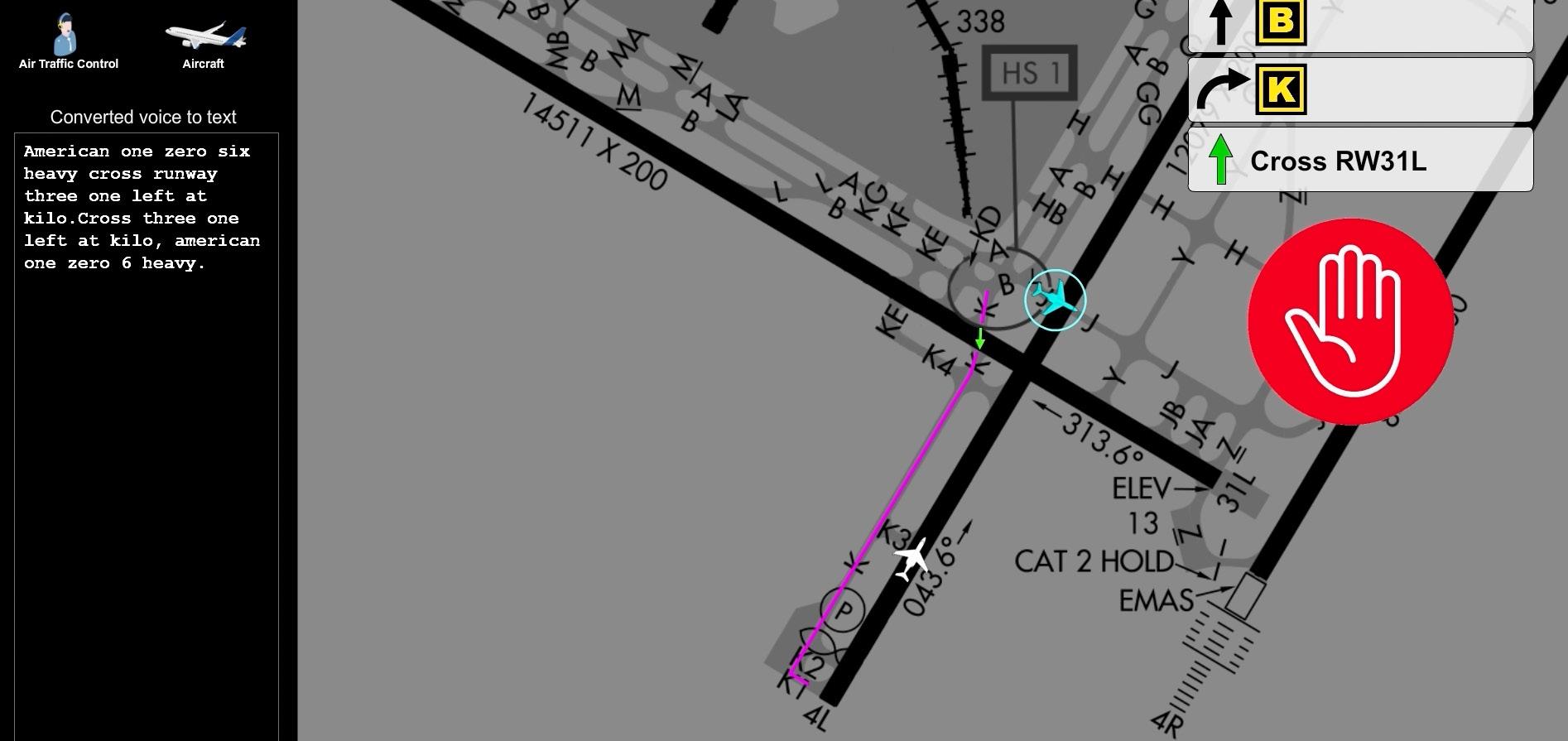
A runway incursion at New York’s John F. Kennedy International Airport (Universal Avionics graphical depiction, left) raised significant concern, as did the incursion below at Chicago’s Midway Airport where a Southwest Airlines Boeing 737 crew initiated a go-around when a corporate jet taxied across the active runway.
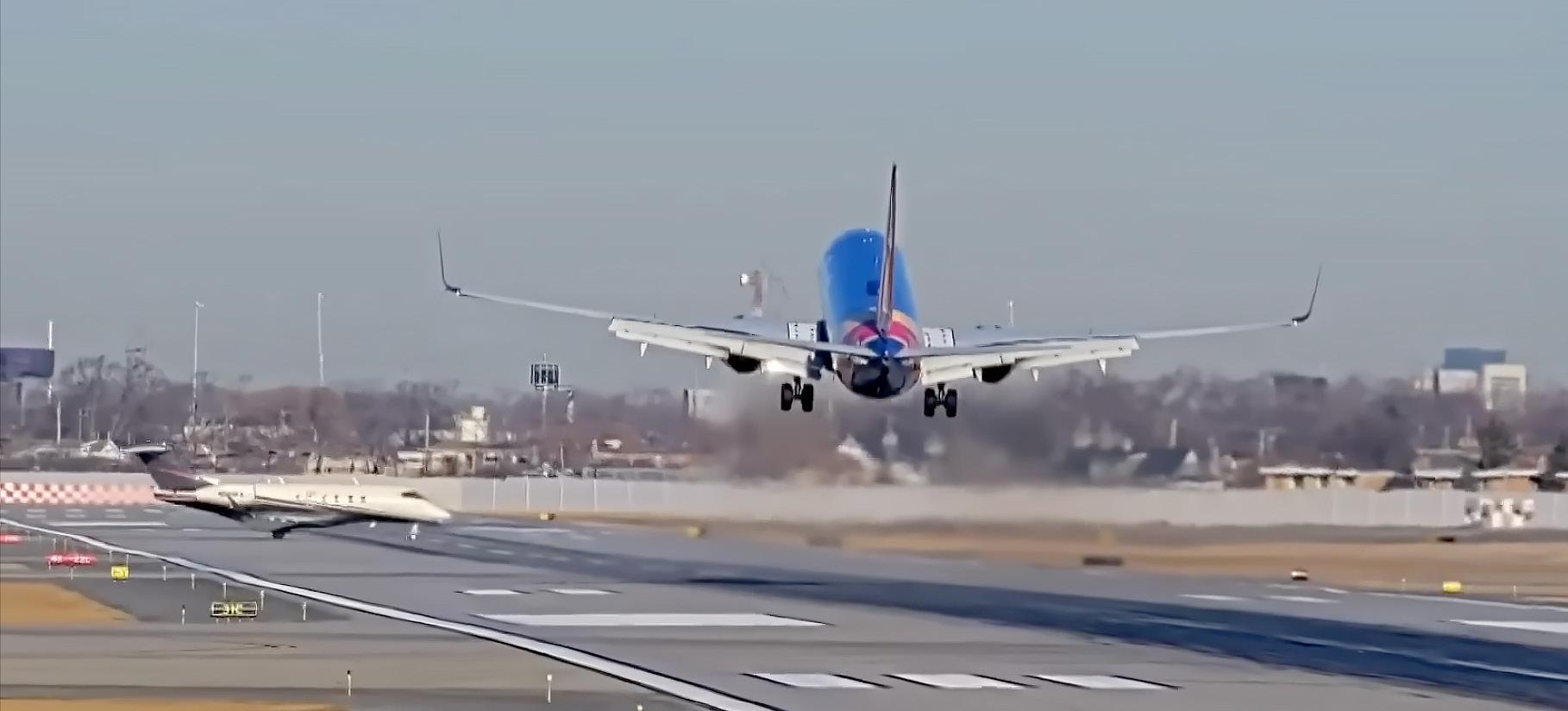
incursions, involve unauthorized movement on the airfield that affects safety but does not occur in the designated runway protection area.)
Over the past 25 years, the U.S. has seen fluctuations in runway incursions, reflecting both challenges and advancements in aviation safety.
In 2002, there were 987 reported runway incursions. By 2024, this number had risen to 1,757 (this number could still change as final reports are issued and causes assigned for incidents and accidents currently under investigation).
It’s important to note that while the total number of incursions has increased, the
most serious incidents—those classified as Categories A and B—have shown a decrease over the past two decades. For instance, in 2022, there were 18 serious runway incursions, down from a high of 32 in 2007.
Several high-profile incidents have underscored the importance of runway safety. In June 1999, American Airlines Flight 1420 overran the runway upon landing in Little Rock, Arkansas, resulting in 11 fatalities. More recently, in February 2025, a Southwest Airlines flight at Chicago’s Midway Airport had to abruptly ascend to avoid a smaller jet crossing its runway.
Among the most serious recent events was a February 2023 incursion in Austin
involving a FedEx Boeing 767 on approach and a Southwest 737. Poor visibility prevented air traffic control from seeing the aircraft on the runway, and the FedEx crew initiated a missed approach just in time to avoid collision. The incident reignited calls for better surface detection systems in towers and alerting systems in cockpits.
NTSB board member Michael Graham, speaking at the 2024 Bombardier Safety Standdown, emphasized the importance of procedural discipline and surface awareness. He cited incidents at JFK and Austin as examples of what he called “clear opportunities for cockpit-based runway alerting systems.”
“Since 2000, we’ve been asking for
surface detection in towers and alerting systems in the cockpit,” said Graham. “We now have technology that can help, and it’s time to implement it widely.”
In 2024, the FAA released its National Runway Safety Plan 2024–2026, outlining riskbased strategies to reduce surface events. The plan emphasizes collaboration with airport operators, pilots, and manufacturers and aligns with the agency’s safety risk management principles.
In March 2025, the agency convened a General and Business Aviation Safety Call to Action to address runway incursions and other safety issues.
Immediate outcomes included increased outreach on phraseology, operations around Class B airspace, and reminders for pilots to use checklists and verify notams. The FAA also committed to analyzing mixed IFR/VFR airspace encounters and expanding tracking technologies in control towers.
At the same time, the U.S. DOT Office of Inspector General released an audit critical of the FAA’s fragmented data-sharing processes, calling for better integration across systems and follow-through on initiatives like the “Technology Sprint.”
The FAA has allocated more than $200 million to runway incursion mitigation programs. This includes deploying new surveillance tools, including:
— Surface Awareness Initiative (SAI): This o ff ers real-time situational awareness to controllers. It is now operational at airports, including Indianapolis and Austin, with more expected by the end of 2025.
— uAvionix FlightLine: Displays aircraft and vehicle movements via ADS-B signals on detailed airport maps.
— Collins Aerospace STARS ARV: Alerts controllers when an aircraft lines up on the wrong surface or approaches a closed runway.
In the cockpit, manufacturers such as Garmin, Honeywell, and Collins Aerospace are introducing enhanced surface alert systems.
Garmin’s SafeTaxi overlays hold-short lines and hotspot indicators on georeferenced airport diagrams. Honeywell’s Surf-A and Surf-IA systems, using GPS and ADS-B, issue real-time aural and visual alerts of potential conflicts during takeoff or taxi.

AMANDA FERRARO CEO, AVIATION SAFETY SOLUTIONS
It’s not about blame. It’s about asking, ‘How do we ensure this never happens again?’
These systems offer pilots improved situational awareness and, according to NTSB investigators, could prevent accidents by alerting crews seconds earlier than ATC in some cases.
The NTSB has issued more than a dozen safety recommendations to the FAA in 2024 alone, calling for:
— Cockpit-based verbal callouts before crossing runways.
— Better SOPs for managing distractions during taxi.
— Flight deck alerting systems for surface hazards.
— Expanded deployment of surface surveillance systems.
Notably, safety recommendations A-24-4 through A-24-6 call for FAA collaboration with OEMs to develop and mandate cockpit-based surface alerting technologies in both new and existing aircraft.
The FAA has concurred with all recommendations but has yet to implement many of them.
Beyond technology, safety experts emphasize procedural rigor and clear communication. At last year’s Bombardier Safety Standdown, Aviation Safety Solutions CEO Amanda Ferraro presented a case study where a lack of internal documentation led to FAA scrutiny and potential violations. “It’s not about blame. It’s about asking, ‘How do we ensure this never happens again?’” she said.
General Aviation Joint Safety Committee (GAJSC) member Jens Hennig echoed that point, praising the FAA’s “From the Flight Deck” video series as a vital resource for pilots unfamiliar with complex airport layouts. “There’s nothing like seeing it visually before you go,” he said.
GAJSC studies found that most wrong-surface events stem from distraction, inexperience, and expectation bias. “It’s not just pilot error—it’s an opportunity to improve planning, training, and awareness,” the group noted.
Efforts to reduce runway incursions are accelerating across the industry. But, with nearly 1,700 incursions annually and a steady stream of close calls, the consensus among regulators, manufacturers, and operators is clear: more must be done.
As the NTSB’s Graham emphasized, “The potential is always there. Vigilance, procedures, and technology together are our best defense.”
BY KERRY LYNCH
The Air Charter Association (ACA) has seen a near doubling of its membership since it rebranded from the Baltic Air Charter Association during its 70th anniversary in 2019. This steady growth since the global pandemic is demonstrating the key role that charter is playing in Europe, according to ACA CEO Glenn Hogben.
Founded as the Airbrokers’ Association in 1949 by members of the Baltic Mercantile and Shipping Exchange, the organization is picking up members at a rate of between six and seven a month and is poised to reach 500 this year.
This, Hogben said, “could be seen as an endorsement and testament of the health of the industry.” More evidence, he added: “We continue to see high levels of engagement across all of our industry events,” and its Air Charter Expo sets yearly new attendance levels.
Branded charter operations have ebbed in Europe in recent months but are still stronger than in pre-pandemic 2019. For the first quarter, according to data provider WingX, charter operations dipped by 2.9% but showed improvements in countries such as France, Spain, and Greece. Importantly, though, Hogben noted that as of September 2024, scheduled airline departures were still 14% below 2019 levels, while business jet and turboprop departures were up 10% at the same time.
“The continued demand for air charter demonstrates the key role it provides in connectivity, business growth, and critical services,” he said, citing several factors for this, including a greater number of charter operations provided into smaller regional airports not served by airlines. In addition, he noted that scheduled service is still reduced from pre-pandemic levels, and air carriers are struggling with on-time performance.
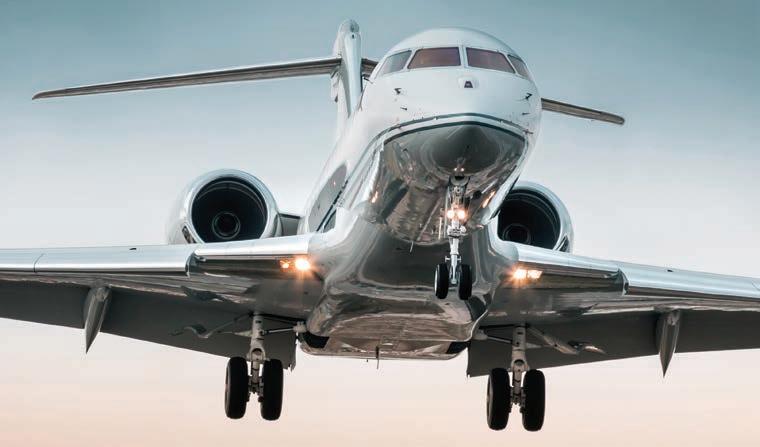
First-quarter 2025 charter operations dropped by 2.9% but remain stronger than in prepandemic 2019, although new tax schemes are threatening the European charter industry.

However, despite the underpinnings of a stronger market in the region, it faces challenges, chiefly illegal charter. ACA has engaged in a strong battle against such activity. Hogben noted this is not new; the organization has been educating the public and government for more than 70 years—nearly its entire existence.
“One of the most important tools available to mitigate against illegal charter flights is awareness. We must ensure that the general public is aware of the dangers posed by operating outside of the legal standards.”
To that end, it rebranded its Fly Legal Day campaign this year with a new look and slogan to boost engagement.
It also has implemented a threepronged approach to encourage legal operations: “Use it,” advising the use of accredited ACA air charter brokers or operators; “Check it,” encouraging people to review things such as operator licenses, air operator certificate, certificate of airworthiness, insurance, and pilot qualifications; and “Report it,” warning that if a flight sounds too good to be true and is significantly cheaper than other options, then it can be reported to the ACA, where it can be verified.
“There is limited data available on the occurrence of illegal charter flights; therefore, it is impossible to quantify the exact number of illegal charters that may occur or how often,” Hogben said. But the association takes submissions to its illegal charter reporting mechanism seriously and shares that information with the relevant authorities.
Other issues, such as airport access, also continue to pose threats to the industry. “Night restrictions at many airports and capacity restrictions at busier times are making it increasingly difficult for business air charter flights to land as close to the destination as possible,” he said. This detracts from one of the key benefits of the market. However, Hogben did say that there have been some positive signs on that
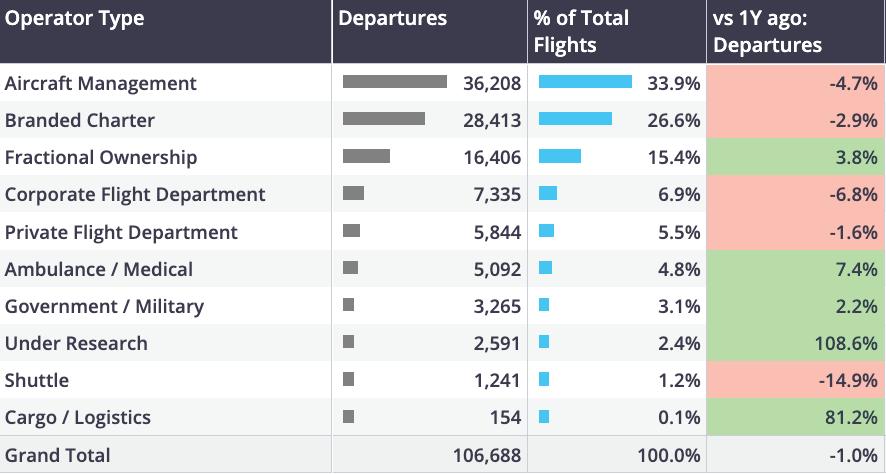
WingX’s Europe data shows that while first quarter year-over-year charter departures are down, fractional-share and air ambulance numbers have climbed, and especially cargo/logistics.
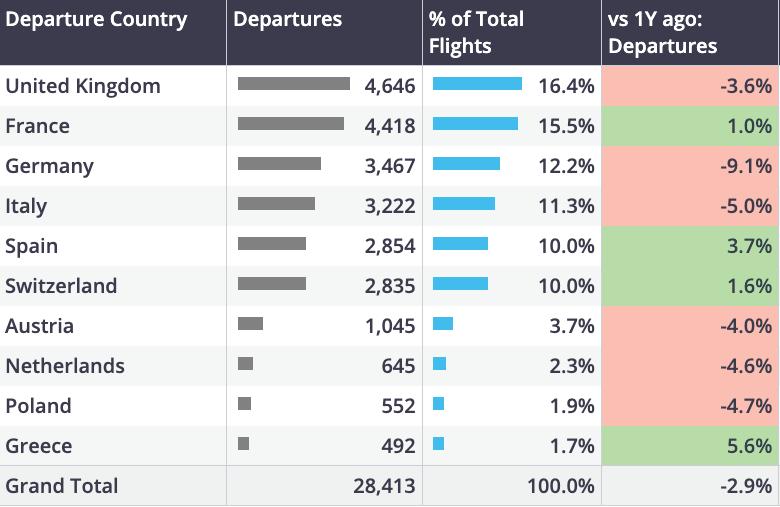
Greece captured the strongest growth in first-quarter charter compared with a year ago, followed by Spain and Switzerland. Germany saw the steepest decline, down 9.1%.
front with the approval of airport expansion projects.
Hogben further expressed concern about regulations and taxation based on misperceptions that could harm the industry either through restrictions or “hugely inflated” taxation.
“This is a short-sighted reaction to a sadly misunderstood sector,” he said. “Business aviation and the air charter sector provide a huge range of critical services to countries
across Europe and around the world…The industry is, above all, an important driver of international trade in goods and services, without which many countries’ GDP and domestic growth would be significantly reduced. Many outside the industry have the misguided view that business aviation is purely a luxury transport method for the rich and famous. This is far from the truth, with the majority of business aviation flights supporting business activities.”
He cited a survey of business aviation users finding that 84% of their operations involved business activity. Another survey found that the average travel time savings in business aircraft versus scheduled airlines was 127 minutes.
“The value of air charter and business aviation industries is hugely underestimated, and recent policies to impose grossly inflated individual passenger tax not only negatively impacts on reducing the critical services and growth of the country’s economy but also encourages minimum passengers to travel on the aircraft, directly countering sustainability efforts to maximize passengers onboard aircraft.”
Sustainability remains an urgent issue for the industry, he added. An ACA survey of 75 air charter professionals at a recent young professionals event pointed to sustainability as the single most important factor affecting the industry in 2025, Hogben said. “The majority of our 440 member companies have an emissions offsetting scheme in place,” he noted, and the majority support an “opt-out” policy under which offsetting is included in the charter quotation, and it is up to the client to opt out. “Some of our members have also gone even further and offset all charter flights by 200% or more, demonstrating real commitment in our sector,” he added, with many companies employing full-time sustainability officers.
Another key initiative underway at ACA is its Broker Qualification program. This stemmed from its individual Broker Training days, involving a one-day high-level overview of some of the regulatory and legal aspects of being a charter broker. ACA members believed that training would encourage best practices and higher standards in the transactions between brokers and operators, ultimately benefiting the end users. That has since evolved into a three-level professional qualification covering financial, legal, and regulatory topics, as well as

GLENN HOGBEN CEO, THE AIR CHARTER ASSOCIATION
service and operational considerations. In 2024, ACA launched an online version of the qualification program to increase access to the training resources.
Since the launch of the qualification in 2021, more than 250 delegates from more than 25 different countries have attended, he noted. “The feedback has been incredibly positive.”
ACA is also working to attract the next generation of young professionals, including
launching an internship program for 18- to 25-year-olds to provide insight into various career paths. The three-month internship program includes classroom training, work experience through placement at a member company, participation in a research project, and an invitation to the Air Charter Excellence Awards event. Interns could work with an operator, charter broker, FBO, flight support company, or an array of other industry service providers.
Its NextGen Group now has 10 members that have participated in 24 “engagements” last year at schools, universities, and colleges, Hogben said. z

BY MATT THURBER
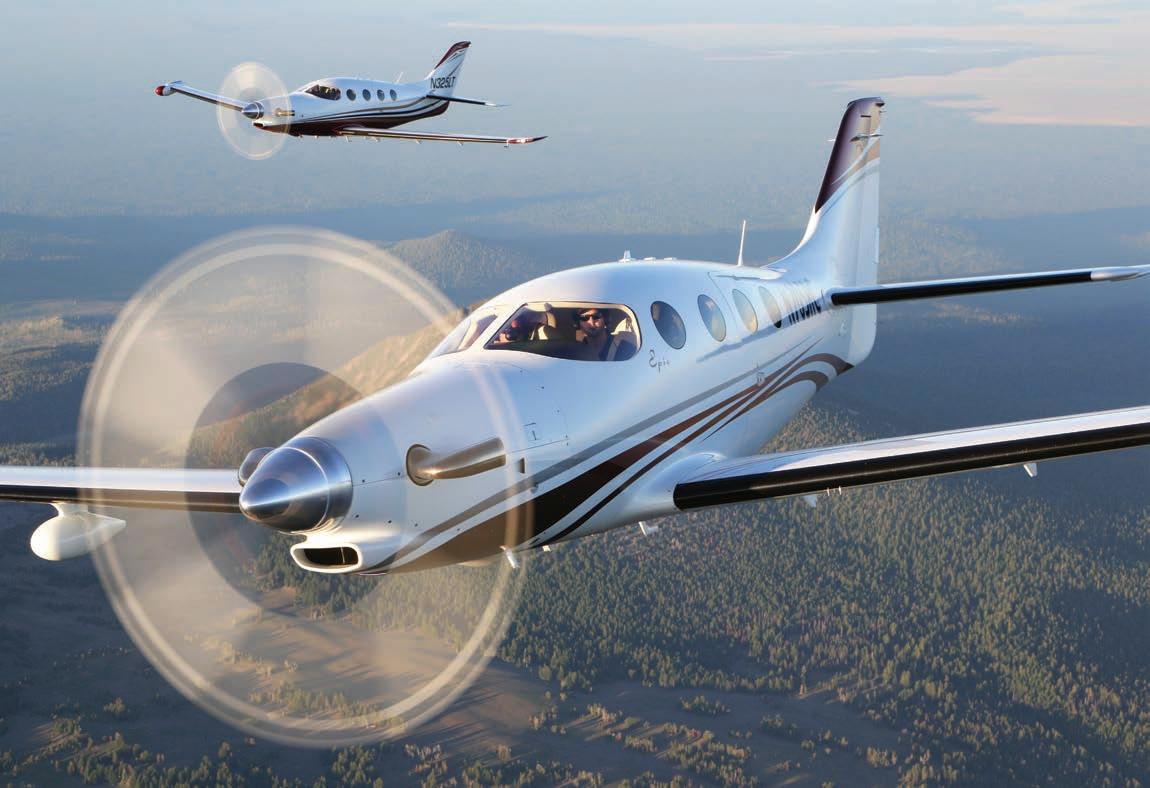
Just before this issue was published, Epic Aircraft unveiled its newest model, the E1000 AX with some significant improvements. These include Garmin’s autothrottle, Autoland, automatic yaw damper, GDL 60 PlaneSync for database updates, and GWX 8000 StormOptix weather radar; Lee Aerospace CoolView windows, True Blue Power lithium-ion batteries, and Starlink airborne connectivity. Pilatus also upgraded the PC-12 with the Pro model, now Garmin-equipped and with Autoland. The following was written before these announcements were made.
When prospective buyers consider high-performance single-engine turboprops, they might at first think about Daher’s TBM 960, the Pilatus PC-12 NGX, Piper M700 Fury, or Textron Aviation Beechcraft Denali, which isn’t yet available but is set to be certified and enter service next year. There is another airplane they should consider, however—one that outperforms all of the others in many aspects, is the only one with an all-composite airframe, and is relatively easy to fly. That airplane is the Epic E1000 GX, manufactured in Bend, Oregon.
Having started as an amateur-built experimental airplane, the E1000 GX took a different road to entering the certified market. The original Bend factory helped buyers assemble their airplanes while meeting FAA requirements for the owner- builder’s participation in manufacturing the airplane. There weren’t many built this way, but one such buyer-builder was Doug King, who still owns his kit-built Epic and now runs the company that makes the FAA-certified E1000 GX.
When Epic started on the certification program for the E1000 almost a decade ago, the goal then was to produce one airplane per month, King recalled. In 2024, the build time was down to only nine days with work underway to whittle that down to just seven days. Now, the company is building more than two airplanes per month.
An E1000 GX airframe consists of 587 composite parts, each of which has to be made to tight tolerances. All of the materials such as carbon fiber, fiberglass, and resin that make up the composite airframe must be constantly tested. Unlike aluminum, which is manufactured to a established standard that is not hard to replicate, composite materials are not so simple. A misalignment of fibers, too much or little resin, improper storage, or resin deterioration can compromise the end product.
Thus, regular testing is necessary, and Epic has its own composites testing lab with sophisticated equipment that assures the quality of every process. Testing is ongoing because there are so many variables involved, and this explains some of the high expenses involved in composites manufacturing.
The parts begin as Toray bidirectional carbon fiber stored in freezers that is then thawed indoors to prevent condensation. A roll of fiber is placed on a cutting table, where it is sliced into various shapes by a CNC cutting machine that maximizes the use of material. Some parts are made of fiberglass, where a non-conductive surface is needed.
The carbon fiber outward-facing material is bonded onto the first layer placed onto a mold, which is copper mesh infused with resin to provide lightning strike protection. Other materials are added in certain areas, whether it’s more layers of carbon fiber to strengthen a part, honeycomb core to give shape and stiffness, tapes to make joints, or fiberglass inserts to add material to areas where hardware
attaches. All of this material layup must be done precisely for consistency and to meet structural design requirements, and laser alignment is the way everything is positioned.
Each part, once built up on its mold, is fitted with thermocouples that help gather data—another important step in composites construction—when the vacuumbagged parts are cured in an oven.
Epic has developed its own software for managing the manufacturing process, aided by King’s background in software development. Each part carries detailed instructions and drawings with the layup schedule, trim and drill instructions, and dimensions to be checked during the quality control process. The instructions live in the computer system but are also duplicated in a paper package that travels with the part in case of computer failure.
Inspections are a continual part of the manufacturing process, not just done at the end. “It’s always layup-inspect, layup-inspect,” King said. A team of inspectors roams the manufacturing floor and checks the parts at each necessary stage,
paving the way for assembly technicians to continue adding layers and preparing the parts for the oven treatment.
Another building is where interior parts are made, and this is where new technicians start out. All parts are assigned scales of difficulty, starting with training parts where new hires learn composite construction and make components that aren’t used on the airplane. “They graduate from the training room into interiors where they make less critical parts and then they move up the food chain from there,” said King.
A complex part like a fuselage half is built on a carbon fiber mold made in-house. Most of the fuselage consists of six plies of carbon fiber, then a layer of honeycomb, then another six plies with a layer of resin-infused copper mesh on the outside. The mesh-infused parts are all tied together electrically and to the metal engine mount.
After oven curing, parts require trimming, hole drilling, and in some cases surface preparation. For composite parts, that means bead blasting to roughen up the surface where other parts will be bonded. Unlike a metal aircraft factory with the
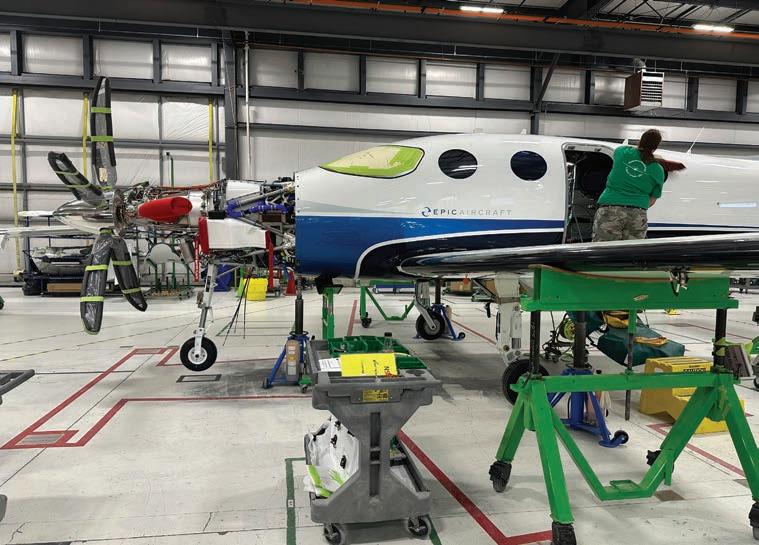
constant loud sound of rivets being hammered into place, composites manufacturing is a quiet affair. Bead blasting is the only place where workers need hearing protection. “This is as loud as it gets,” King said.
More inspections follow before the two fuselage halves are bonded together, but first bulkheads are bonded using a special epoxy resin.
The wing spars are a good example of how layering carbon fiber adds strength where required while minimizing the use of material. The wing is built as one piece, and the forward and rear spars start out thin at the tips and become thicker toward the center. “The good thing about the composites—you can just layer it like you need to,” he said.
After the layers are all done, “we bring in a second doubler on the front to turn this C-beam into an I-beam and put a doubler over the top of that so it’s really strong in the center.”
Wing assembly begins with the bottom skin, then the forward spar is placed, followed by all the ribs, and then the aft spar. Once everything is properly in place, the top skin is attached, then the entire
assembly is cured in place, covered by a giant tarp acting as a temporary oven that is lowered over the wing.
Flight control surfaces are all mounted on the wing for proper fitting. The wing and fuselage are match-drilled for the four giant bolts that mate the two assemblies. But before final assembly, everything goes to the paint shop, which is much more efficient than painting the entire airplane after putting it together.
Of course, there are many more steps involved, including equipment that needs to be installed on large components. Sound-dampening and absorption products are placed in the fuselage, and these are designed to mitigate the noise frequencies generated in flight. Flight testing a bare airplane revealed how to minimize interior noise, aided by 3M engineers who helped design the products for the E1000.
Equipment added at this stage comes from pre-assembled kits that are staged and ready for the assembly technicians. Each step is carefully plotted and visually apparent on the computer and paper system. If an assembler runs into a problem, a red pen included in the kit is used to make
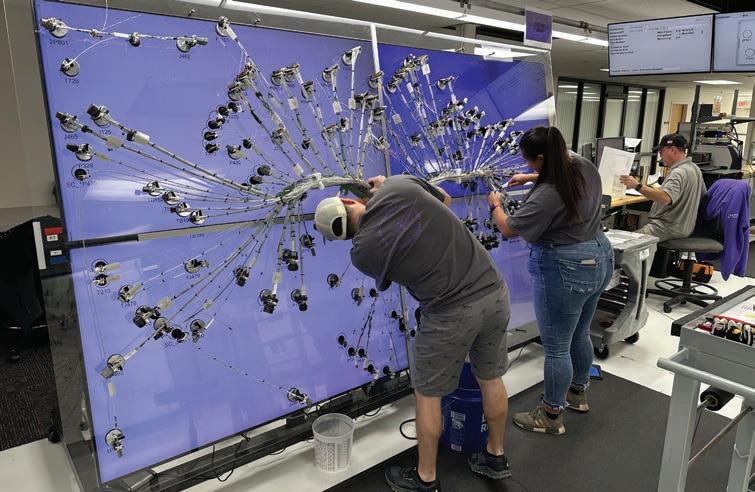
a note of the problem. But to keep the process efficient, the assembler doesn’t get involved in fixing the problem. “The idea is these are surgeons,” he said. “So you don’t bother the surgeon with it. You just want to write it down and push it aside and let it be handled by the team that [specializes in fixing the problem]. We’re trying to constantly improve the process.”
The Pratt & Whitney Canada PT6A-67A engine is built up as a complete assembly and then installed onto the nearly complete fuselage.
Instrument panels are also populated before being installed, and Epic has a test bench where the assembled panel is completely tested, acting like it’s in the airplane, to ensure all the hardware and software is operating optimally.
Wiring harnesses for the entire airplane and the avionics are all manufactured in-house, in a unique fashion that Epic developed to maximize efficiency. The Epic-designed manufacturing software manages the harness layup process, which starts with a technician making up a wire using a machine that laser-prints identification information and laser-strips the ends of the wire.
After crimping connectors onto the ends of the wire using the specified tool, the technician brings it to the layout board, where other technicians assemble the harness. The board is actually a computer display showing exactly where each wire goes, making it easy to incorporate changes or accommodate different optional equipment. Once all the correct wires are placed, that section of the board turns green to indicate it is done.
“We wrote all this software,” King said, “and built these tables with the screens. It tells them which pin to put in which thing, and the tester is built into the board. It will test that harness as it’s being assembled.”
The entire harness is thoroughly tested after completion, and then after anti-chafe
material is added to the wiring bundles, it is tested again. “This brought our costs down and quality up,” he said.
Before the first ground run, everything is tested again, and then the completed airplane is rolled out to the production flight test hangar. Technicians add a data acquisition system for the necessary five to 10 hours of flight testing. The final step is to install the interior.
Evidence of King’s enormous influence is everywhere at the Bend facility, from the software that runs manufacturing to the flying side of the operation. Pilot training is another one of the areas where he has focused his attention.
Although more than 70 E1000s are flying, that isn’t enough to attract the traditional training companies to build a multimilliondollar full-flight simulator, so Epic had Frasca (now owned by FlightSafety International) build an E1000 GX flight training device that replicates the airplane’s cockpit and performance but without a motion base. Equipped with real Garmin G1000 NXi avionics and GFC 700 autopilot, the simulator features a 220- by 58-degree visual system, instructor operating station, and custom visual databases. While FAA regulations do not require pilots to obtain training to fly the E1000 GX—as long as they have complex and high-performance airplane and high-altitude endorsements— insurance underwriters are unlikely to cover a pilot who isn’t trained.
According to Epic, “[The] E1000 GX flight training curriculum is modeled after turbojet type rating programs, providing a level of training that in many cases exceeds industry norms for single-engine turboprop aircraft.”
The typical training program involves 15 to 25 hours in both the simulator and airplane. But King doesn’t want to throw an unprepared pilot into the training program without making sure they are ready for what might be a much faster airplane than

they’ve ever flown. The pilot’s IFR skills need to be sharp too, and King has devised a way to measure that quickly before wasting money on training.
What King did is so simple that it seems amazing other training operations are not using the same process. King developed an app called the Epic ATC Test, billed as an “air traffic control command speed test.”
“Now we can measure them,” he explained. A pilot may say that his or her IFR skills are up to par but that the E1000 cockpit is unfamiliar. The app is designed not only to test whether a pilot is familiar with the avionics but also to help them learn the pilot interface.
The Epic ATC Test app simply calls out audible air tra ffic controller instructions, and the pilot, sitting in a simulator or Epic’s Garmin-built avionics panel, completes the instructed task. This isn’t about inputting a complex flight plan but more about knowing exactly where to look and which knob or button to use for heading, altitude, transponder, and frequency changes. “You’re getting your muscle memory used to where to look and what to turn before you get them in the airplane,” King said. “If you can do this in under two minutes [then you’re ready]. It’s all common
stuff. You better have those down.”
All the test does is tell the pilot something like, “N123AB, squawk 4342, altimeter 29.89” or “N123AB, radar contact, turn left heading 180, climb and maintain 4,000.” After completing each task, for example, by setting the transponder code and altimeter, the pilot presses the “next” button in the app and then does the next task. “You’ve got to be able to reach right forward and not get confused over which button to go for,” King said. He demonstrated the app and got all the tasks done in 1 minute 36 seconds. Anyone is welcome to download the free app and try it in their aircraft or when learning how to fly a new type.
Epic also has a Frasca RTD simulator that is used as a procedures trainer and is available for free employee use. The RTD is available for new Epic pilots who want to hone their IFR skills.
“A simulator gives you the ability to change the way you teach instrument flying,” King said, “and it’s super effective. We’re going to practice holds and remove all the mystery of holds right up front. It doesn’t have to be a sophisticated simulator, just a basic procedures trainer.”
King has taken the benefits of simulation a step further with Epic’s non-flying
partner program, called “One Day for $1K.”
Using the E1000 GX simulator, an instructor will teach a non-pilot flying partner how to talk on the radio and land the airplane safely.
This isn’t a typical “pinch hitter course,” however, because of the way the non-pilot partner is taught to land. In most such courses, an instructor will use either an airplane or simulator and give instruction that starts at the point of the pilot incapacitation event, repeating the process until the candidate can achieve a safe landing.
King upended the traditional pinch hitter curriculum by starting the person in the simulator but positioned on the ground. “We teach them to stop the airplane first,” he explained, “then we teach them to touch down and stop the airplane, and we teach them to come in and flare and touch down and stop.”
The idea is to build up the person’s capabilities by starting with a simple maneuver, stopping the airplane on the ground, then backing that up to a position just before touchdown and letting the airplane land, then stopping it, and repeating as necessary until moving to the next step where they’ll learn to flare, touch down, and land.
“You know what this does?” he asked. “It removes the anxiety because the first thing you learn is how to stop. So when you teach them [each step], then you take them to a stabilized approach, and they just flare and land, and then they know how to stop it because they have that expectation built in. And when you back up a little bit further in the sky, well, ‘now I know how to flare, land, and stop.’
“I came up with that because I was trying to figure out a different way to teach it, and we can’t do that in an airplane. We learn to fly, and everything ahead of us is a mystery, right? So you learn to the point of being confused and not until you land the first time do you think, ‘I can really do this.’ And instead [you learn] the piece and then
reusing that and a little more and going a little more. The other thing is, you get more landings that way.
“In the simulator, you have a program, you have it paused, and then you say, ‘Now just step on the brakes and stop.’ Or you’re just above the runway, ‘just hold it like that, and then step on the brakes and stop.’
A simulator gives you the ability to change the way you teach instrument flying, and it’s super e ective. We’re going to practice holds and remove all the mystery of holds right up front. It doesn’t have to be a sophisticated simulator, just a basic procedures trainer.
Because you can’t pause a real airplane.”
To test the One Day for $1K program, King tapped director of sales and marketing Amy Foster Trenz, who is not a pilot. Although her husband is a flight instructor, they had never done any training together. “That husband-wife thing sometimes is real understandable,” King said, referring to the difficulty of an instructor teaching their spouse to fly.
After running Trenz through the program, King set up a live demonstration for attendees at the annual Epic fly-in. With video cameras running in the simulator and the fly-in crowd watching, Trenz was in the E1000 simulator’s right seat with
an Epic instructor in the left seat, who promptly keeled over. Her first move was to hit the autopilot’s blue level button and then she pulled out the checklist and put an oxygen mask on the “unconscious” instructor.
“It takes them through the steps of setting the airplane up and asking for help,” like a script, King said. “Give me the frequencies, then give me a heading, altitude, what to say to ATC.”
Trenz demonstrated a successful save of the airplane and her instructor to the assembled audience after only about two hours of training.
When Rogério Andrade, CEO and founder of Brazilian charter and fractional share operator Avantto, started looking for a single- engine turboprop to supplement the company’s Embraer jet fleet, he looked at the Pilatus PC-12 NGX, Daher TBM 900 series, and Piper M600/SLS before selecting the E1000 GX. The company now operates four E1000s of a total order for 34, scheduled for delivery in the coming years. Its fleet includes Embraer Phenom 100s and 300s and Legacy 500s as well as Airbus H125 and H130 and Leonardo A109S helicopters.
Brazil added regulations—RBAC 91K— to accommodate interest in fractional share operations in 2023. “Avantto was the first operator to receive certification under this regulation, which has been highly beneficial to the industry,” according to Andrade. “It clearly defines the roles and responsibilities of all participants in the fractional ownership model while establishing robust safety and operational standards for service providers.”
Andrade said he selected the E1000 for its “jet-like performance with turboprop efficiency while maintaining lower operating costs than comparable aircraft. Its
sleek design, spacious cabin, and versatility make it an ideal choice for both business and personal use, setting a new benchmark in its category.”
The typical Avantto customer is an agribusiness entrepreneur, he said, “a market segment that has shown strong demand, with many customers using the aircraft for flights between cities in Brazil’s interior or to their rural properties.” Another market developed for buyers who wanted to fly from major cities to their beach or country homes. The typical flight duration for fractional share trips is between one hour to one and a half hours.
Buyers can purchase an E1000 share in increments ranging from 1/12 to 1/16 or 1/3. All E1000 flights are flown with two pilots who train with Epic regularly.
In many respects, the E1000 outperforms the available single-engine turboprops and also the Beechcraft Denali, for which all the specifications are not yet published. Where pilots and passengers will notice a key difference is the cabin interior. The PC-12 and Denali are wider than the TBM 960 and M700, but the E1000 is wider than the latter two and the legroom between the club seating in the cabin is roomy enough so that passengers’ knees will never touch.
Only the TBM 960 comes close (330 knots) to the E1000’s maximum cruising speed of 333 knots. The M700’s 301-knot speed is still faster than the PC-12 (290 knots) and Denali (285 knots).
Mtow of the E1000 is just 8,000 pounds, which seems to indicate that careful composite design and construction can result in a more efficient airplane. With full fuel, the E1000 can carry 1,100 pounds, the same as the Denali (we don’t know its mtow yet), and much more than the TBM’s 888 pounds, the PC-12’s 988 pounds, or the M700’s 565 pounds.
The lightest of the bunch is the M700 at 6,000 pounds, but it carries nearly the same amount of fuel as the E1000—260 versus 264 gallons—and thus boasts a
longer range figure at 1,852 nm. At 1,560 nm, the E1000’s range is the lowest of these airplanes, but it still delivers a decent 260 knots at long-range cruise speed.
With a maximum altitude of FL340, the E1000 is the highest flying; the TBM 960 and Denali can go to FL310, while the PC-12 and M700 top out at FL300.
What impressed me about the E1000 GX is that, despite its capability and performance, it is easy to fly. Perhaps that stems from its experimental roots, but this is an airplane with no surprises, simple systems,
and a clean pilot interface. The most complex part of the interface is the Garmin keyboard panel, which is an alphanumeric rather than a qwerty key layout. For a brain trained on qwerty, alphanumeric takes additional time to locate the right key, but ultimately it’s not that much of an impediment.
One item that pilots will quickly notice— because, like me, they’ll be looking all over the cockpit to find it—is the parking brake. The E1000 GX has no parking brake because it isn’t necessary.
Holding the brakes during the start and when needed during taxi isn’t an added


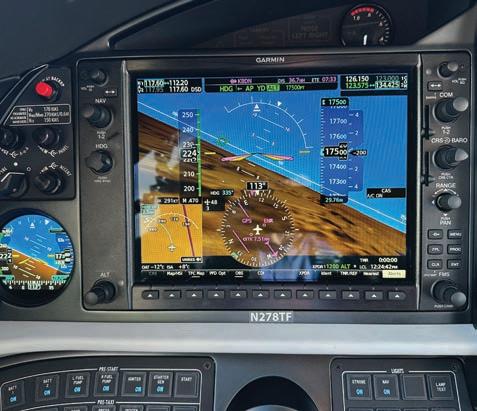
burden, and eliminating the parking brake prevents accidents that have happened in business jets, where the pilot stopped near or on the runway, forgot that the parking brake had been set, then tried to force the airplane into the air as it struggled to accelerate.
The E1000 GX is approved for flight into known icing with deicing boots on the wings, horizontal stabilizer, engine inlet, heated propeller, air data probes, and angle-of-attack sensors. A helpful feature is automatic fuel tank switching.
Starting the big PT6 is the normal way without any automation: turn on batteries 1 and 2, then the top row of switches (left and right fuel pump, igniter, startergenerator), then the next row of switches (standby alternator, fuel auto select, door seal, pressurization, and oxygen), hit the starter button, at 13% NG move the red condition lever over its gate.
Once the engine is done starting, turn on pitot heat, strobes, and nav lights, and that’s it.
King explained that takeoff happens quickly and to be ready for the three steps after liftoff: gear up, yaw damper, flaps up. The engine’s torque limiter allows for pushing the power lever all the way forward so there is no fiddling necessary
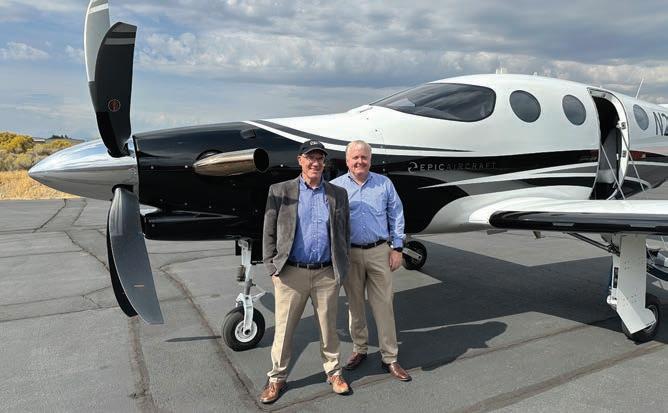
during the takeoff run. We were loaded with about half tanks of fuel and with four people onboard at about 6,400 pounds, 1,600 pounds fewer than mtow.
With the flaps set to the takeoff setting, I taxied the E1000 GX onto Bend’s Runway 16 and, once lined up, moved the power lever forward and felt a strong push as we quickly accelerated to the 90-knot rotation speed. I pulled the nose up to King’s recommended 12.5 degrees, then ran through the takeoff mantra and brought the gear up, switched on the yaw damper, and raised the flaps, then climbed out at 150 knots.
We hadn’t filed an IFR flight plan and we leveled off at 17,500 feet. At more efficient altitudes in the high 20s and low 30s, the PT6 burns about 67 gph. King’s rule of thumb for cruise is “300 knots true airspeed at 300 pph.”
With torque set to 83%, I flew a steep high-speed 180-degree turn to the left and then back to the right. The E1000 GX stayed smoothly on the rails without much heaviness on the controls.
After descending a few thousand feet, I tried some slow flight and, with the gear and flaps down, decelerated until the stick shaker activated in case I didn’t notice that the angle-of-attack indicator was turning red. At slow speeds, the ailerons
and elevator lightened up, and I tested the feel while simulating a turn from base to final at 95 knots to prepare for the upcoming landing.
Returning to Bend Airport, I flew over the runway on a midfield crosswind, then turned downwind for Runway 16. The E1000 GX likes to stay in the air and I came in a little high and had to pull the power to idle to get it to descend.
On final, still a bit high, I managed to capture the PAPI glide path while keeping the final approach speed at 95 knots and then adding a little power. Flying to the runway, I held the nose up slightly and didn’t need to flare to touch down smoothly. It felt like the landing gear met the runway sooner than I expected, but this is probably because the E1000 GX stands a little tall on its trailing-link main gear.
Overall, my impression from the flight is that the E1000 GX is easier to fly than most other single-engine turboprops and is more comparable to the Piper M-series.
Obviously, this is a high-performance machine and requires that pilots are proficient and able to think ahead of an airplane that can fly at high speeds and altitudes, but it also gave the impression that learning its characteristics and capabilities would be a relatively straightforward hurdle. z

BY KERRY LYNCH
Pete Bunce retired in April after leading the General Aviation Manufacturers Association (GAMA) as president and CEO for 20 years. His GAMA service capped an illustrious career that included 26 years with the U.S. Air Force, where he flew F-15s and A-10s. His last assignment was as the director of the Air Force Congressional Budget and Appropriations liaison. While at GAMA, the association expanded in reach and scope. He also played instrumental roles in countless pressing industry issues. Bunce talked to AIN about his time with GAMA.
Talk about how GAMA has grown over the past couple of decades.
When I came to GAMA, we did have Dassault as a member and of course, Pratt & Whitney Canada, maybe Piaggio and TBM. There weren’t very many [nonU.S. companies]. But we only had a little more than 40 members. I am proud that GAMA tripled in size since then, despite all the consolidation.
What were some of the major changes that occurred at GAMA over the years as the industry evolved?
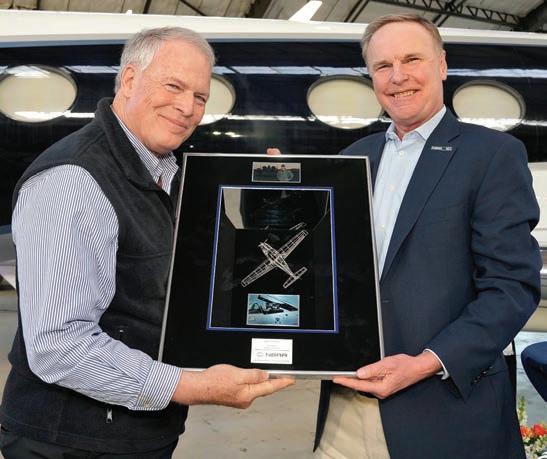
One of the first things I instituted when I came on board was a Capitol Hill day. I had seen the value of that from my Air Force days. It was really successful. It built personal relationships. [GAMA’s] members are employers, so I knew they’d get the meeting with the principal. Association staff can talk until we’re blue in the face as the technical experts, but when you have the company members, especially at GAMA, the folks on the hill listen to them.
Then, the next major thing that I saw was the fact that the EASA was growing. EASA was relatively new when I came on board. But it was growing in prominence, and in particular, it was growing in international regulatory outreach. I said we have to get more involved in Europe. That was extremely important for us to establish our foothold in Brussels. That turned out to be successful.
How did membership change during this time?
We brought on large MRO companies. Jet Aviation approached me first, wanting to be a member. And then StandardAero and Duncan Aviation—all of the big MRO companies came on board.
Then, I focused on helicopters. Just the technology that we were putting in the cockpit and the capabilities that we’re building into them made it very important to be able to keep growing the association on the rotorcraft side. Bell was the first one. That’s been very rewarding because the helicopter companies have figured out what they were missing by not working together on both sides of the Atlantic.
I think over that period of time, because we’ve grown GAMA and because we’ve been around working in Brussels, Cologne,
and Washington, our influence has grown. Especially with the capability of the GAMA staff. They have become the people with the most expertise on so many different areas.
Was it difficult to convince your members to expand GAMA’s reach to MROs and helicopters?
No, surprisingly enough. I laid it out for them where I saw the advantages, and they accepted it. They figured out that there was great value in it. When I laid out the case for having a place where these advanced air mobility [AAM] companies could be housed [through its Electric Propulsion and Innovation Committee (EPIC) formed in 2015], that probably was the biggest change. When I made the case for AAM and how we would bring them in before they were certified, that’s when I kind of got that skeptical eye—“You want to establish a very inexpensive membership so they can all be together?” And I said, “Ultimately, if we’re successful in AAM, these companies are going to provide business for all the traditional manufacturers.” When I laid that all out, they agreed to it. It’s pretty cool to see that in 2015, there were 11 companies, and now it’s our biggest committee. Virtually every GAMA member is in that committee.
Have you seen the industry maintain its sense of community?
That’s something that we have tried to foster. These guys compete very robustly
out in the marketplace. But they compete honorably. And when they get into a GAMA meeting, they’re friends, and they recognize each other’s expertise. They joke with one another. I always said I have the best association job in the world because I get to be around these captains of industry, and we have a good time. I think that fosters a lot.
Does that kind of collaboration help with safety and innovation?
Unquestionably. At our board meetings, we do tech talks, whether we do a panel or one person talking about things such as automation and fly-by-wire. They share their safety technology expertise. It’s something I am very proud of. It’s different than the car companies. We don’t compete with each other on safety. We help each other with safety initiatives. That’s a cool thing to see.
Talk a little about some of the tough battles you’ve faced, such as the financial downfall in the late 2000s.
That was a very concerning time. The economy was roaring, and we had people flipping airplane positions right and left. It was the go-go days. And then it came crashing down. We had this huge ramp-up in production capability and personnel; then, all of a sudden, we had a couple of years of major painful layoffs. It’s very dramatic.
And then we had the auto execs come to town, and we have all of this craziness up on Capitol Hill wanting to punish the industry. Some of our biggest successes are bad things that didn’t happen. That was one of them, working on the Hill to try to defeat some initiatives that would’ve really penalized our industry.
There have been other things like the small aircraft security program, where you weren’t even going to be able to carry things like golf clubs onboard the aircraft out of fear that somebody could bludgeon somebody with them. I mean, that was a major fight.
Then came the pandemic. We sent everybody home and then the
government says now essential personnel need to come back. We had to figure out how we would do that. I remember some of our companies were making ventilators for the first month, and all of a sudden, everybody saw that business aviation was having an uptick. All of a sudden, we have to keep producing aircraft despite our supply chain collapsing at the time. They shared their practices. If one company found a source of semiconductors somewhere, they shared it with other companies. What industry does that?
Another issue that seems to be ever-present is user fees/privatization. Right. And especially in this current period of trying to get the government out of certain functions. But I have been very happy about the rhetoric that’s coming out of the administration There isn’t a whole lot of appetite for privatizing the system. It is getting enough controllers out there and then giving them the technology they need. That’s exactly where we all want to go. And also, no one in industry wants to see a privatization fight because they know it would consume all the air in the room, and we would not get anywhere at tackling the problems. In my 20 years, I have never seen the industry so aligned as it is right now. I hope that the Congress and the administration recognize the power of that.
What do you see in the future that might be the challenges? On the flip side, what are you walking away from that you’re proud of and see going well?
I’ll start with that last one first. What I’m most proud of is the fact that I’m leaving Jim Viola with the best staff that you could ever ask for taking over an association. I’m also proud that we have a very supportive board. You couldn’t ask for a better board. My concerns, starting in Europe, really lie in this anti-business jet mindset that they have. Like the taxes in France, they’re not going back into aviation. It’s not even trying to disguise it as green. Why aren’t
they taxing all the yachts? It’s discriminatory, and it’s crazy.
And then the lack of the embrace by the European Commission on book-and-claim concerns me. We’ve got to get the European Commission to understand that if you’re going to make sustainable aviation fuel something that’s used, you need to encourage people to use it.
And then, I’m very concerned about the tariffs in the U.S. triggering retaliatory tariffs by the Canadians, the Mexicans, and the Europeans. I just cannot see anything good that’s going to come out of this. It will hurt the industry.
The supply chain’s not getting any better. A lot of it has to do with a lot of the mom and pops have gotten out of the business. It’s easier to supply to other industries than it is to aviation because there are many more rules to it.
I’m concerned about the FAA. The FAA seems to look at things that don’t need to be changed. One example is the FAA promised not to use ADS-B for enforcement. Now they’ve decided to do that. They’ve reneged on a promise, and what’s that causing? People are pulling the circuit breaker on their ADS-B now. That’s counter to safety.
Giving back to [my wife] Patty and spending my time with her, but also spending time with my son, who was injured pretty badly in Iraq. I’m going to fly a lot and instruct—go back to basics there. I’m going to serve on some boards but go back to Wisconsin. z
This article has been edited and condensed. To read the full interview, please visit ainonline.com
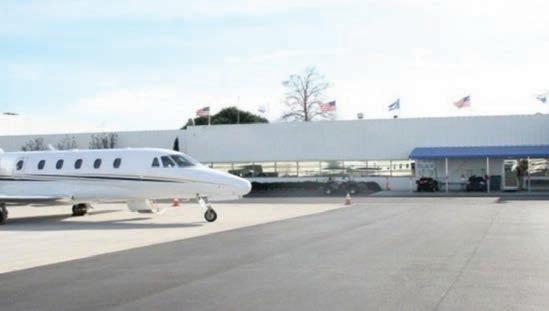
Modern Aviation will take over the operation of the lone FBO at North Carolina’s Charlotte Douglas International Airport (KCLT) starting at the end of June. The growing FBO chain was selected as the winner of the airport’s request for proposal, edging out long-time incumbent Wilson Jet Center.
For Modern, this represents its 18th location and its second in the state along with Wilmington International Airport (KILM). AT KCLT, it received a 20-year lease— including renewal options—for the facility, which has more than 220,000 sq ft of hangar space. As part of its proposal, the company agreed to renovate the FBO terminal.
Up-and-coming FBO chain Vantage Aviation has acquired Monaco Air, the lone FBO at Minnesota’s Duluth International Airport (KDLH). A member of the World Fuel-sponsored Air Elite Network, the complex includes a 14,000-sq-ft terminal built in 2016 that also houses the airport’s U.S. Customs and Border Protection facility.
In addition, the terminal includes multiple passenger seating areas, pilot lounge, snooze rooms with full beds, showers, equipment and storage lockers, business center, flight-planning area, fitness center, and two conference rooms with seating for 20 and eight, respectively. Amenities include crew cars and onsite car rentals. The location also includes 40,000 sq ft of hangar space. Since its launch in October, Vantage has acquired four FBOs, including two facilities in Greenville, South Carolina at Greenville Downtown Airport (KGMU)—the busiest GA airport in the state—and Donaldson Field Airport (KGYH). It is also developing a new facility at Colorado’s Rifle Garfield County Airport (KRIL).
Premier Private Jets has announced the acquisition of the former Wheels Up FBO at Cincinnati/Northern Kentucky International Airport (KCVG). The deal expands the business aviation services group’s network, which now includes three FBOs in the Upper Midwest region, with facilities already established at Dayton International Airport (KDAY) and Oakland County International Airport (KPTK) near Detroit.
With 50,000 sq ft of space, the hangar and terminal buildings include a spacious lounge area and adjoining offices. Outside, a 225,000-sq-ft ramp has space for larger aircraft, such as Boeing 757s that tend to be used by professional sports teams for charter flights.
Million Air has begun the Phase II expansion of its FBO at Austin-Bergstrom International Airport (KAUS) in Texas. The FBO—one of three on the field—opened in 2019. This second $50 million phase—scheduled for completion in second-quarter 2026—will add a trio of 40,000-sq-ft hangars. This will bring the facility to more than 241,000 sq ft of aircraft shelter and double the ramp to 19 acres. A company executive told AIN that if the facility had another 100,000 sq ft of hangar space today, it would already be fully occupied based on current demand.
The project also will include a 15,600-sq-ft office building for tenants, two new staffed 7,300-sq-ft, two-story departure lounges sandwiched between the new hangars, and four additional parking lots (one valet served) to accommodate up to 233 vehicles. This is in addition to the existing 15,000sq-ft terminal and its slate of upscale amenities including a complementary barista-staffed coffee bar, upstairs sky lounge, and exterior wrap-around balcony offering airfield views. z
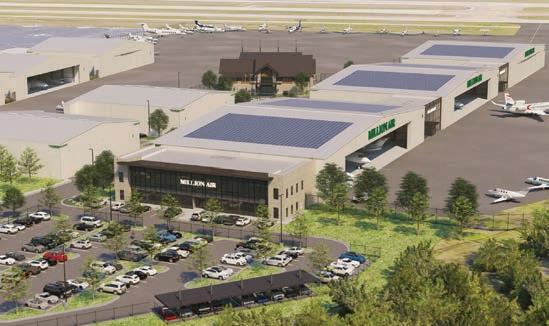
“Our goal was never to be a big FBO; the goal was always to be the best FBO,” said George Moussa, owner and president of Ambassador Jet Center, one of two service providers at Dallas Executive Airport (KRBD), formerly Redbird Airport. Moussa bought the FBO—which sits on a 17-acre leasehold—in 2001, and at that time, it consisted of what he described as a “small shack” and a hangar at the then-sleepy airport located south of the city’s business district.
The old building was torn down and replaced with a two-story 5,500-sq-ft terminal featuring a double-height passenger lobby, eight-seat conference room, pilot lounge, refreshment bar, and kitchen downstairs, with company o ces upstairs, along with a balcony overlooking the atrium.
Nearing 20 years old now, the company strives to keep the building—currently in the midst of a full renovation—in prime condition. Recent improvements include an upgraded CSR counter, new flooring, paint, and coffee bar. Next on tap for refurbishment are the pilot lounge and restrooms, with the project slated for completion by mid-summer 2025.
An adjoining 18,000-sq-ft hangar is capable of sheltering the latest ultra-long-range business jets, while the complex includes a pair of 4,900-sq-ft hangars, two 4,225sq-ft hangars, and a trio of 3,600-sq-ft private hangars, along with 110 T-hangars. It is home to a half-dozen turbine-powered aircraft ranging from a Daher TBM 900 to a pair of Dassault Falcon 900Bs.
While KRBD’s contract tower is staffed from 7 a.m. until 9 p.m., seven days a week, Ambassador—with its staff of 12—is open from 6 a.m. until 10 p.m. with after-hours callout available.
The Avfuel-branded location claims the lion’s share of activity on the field and
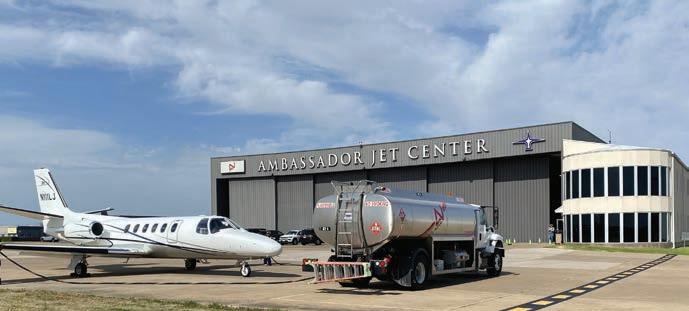
pumps more than a million gallons of fuel a year from its fuel farm, which holds 20,000 gallons of jet-A and 10,000 gallons of avgas. It is served by a trio of refuelers: two jet tankers (8,000-gallon and 5,000-gallon), and a 750-gallon capacity 100LL truck. The FBO is the official refueler for the Commemorative Air Force headquarters, which is located on the field and is home to the still-flying WWII bombers B-29 Fifi and B-24 Diamond Lil.
“Our general transient customer is one that has business in downtown Dallas because we are so easy to get to,” Moussa told AIN . “The airport advertises itself as one tra c light and 10 minutes [away].” He added that KRBD has experienced a renaissance over the past decade, with the city’s infrastructure investments attracting more customers and more businesses.
To meet that growing demand, Ambassador soon expects to begin construction on a $3 million, 22,000-sq-ft hangar, which is slated to open next year.
With the Metroplex o ering aircraft operators many choices, Moussa believes it is the customer experience that is the lone distinguishing feature. “The way I teach my guys is our jet-A is no di erent than anyone else’s, and so the only thing we have to sell
is customer service or they’ll go somewhere else,” he said. “Pilots are lucky because Dallas is peppered with airports. You’ve got Love Field, you’ve got Mesquite, Arlington, Meacham, Addison, Midway, Lancaster, you go down the list within a five-minute airplane ride, you can probably get to three or four di erent airports, so it’s all really close.”
As a result, he expects and encourages his sta to go the extra mile (in some cases literally) for customers. “We’ve taken customer cars into the dealership to get serviced or a new set of tires put on them. We’ll go wash a customer’s car for them, and if it’s late at night, we’ll drive someone to their hotel rather than have them take an Uber, even if it’s downtown.”
Moussa noted that he has had numerous opportunities over the past two decades to sell the business, but has no plans to do so.
As a pilot himself, he continues to leverage his experiences in the industry to make the facility attractive to customers. “I know what it’s like to go into an expensive FBO, and you just feel like you’re getting taken advantage of, and so we always try to do what’s right,” he said. “We don’t want to rip them o , we don’t want to overcharge them, we want to make them feel welcome because we want their business back.” C.E.
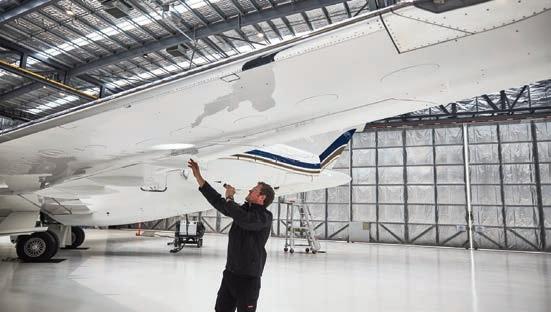
Bombardier’s new line maintenance station (LMS) in Perth, Australia, is the company’s tenth and provides more local service options, complementing the company’s Melbourne service center that opened in September 2022.
At the Perth LMS, Bombardier offers light scheduled, unscheduled, and aircraft-on-ground support for all Learjets, Challengers, and Globals. Bombardier also operates mobile response trucks in Melbourne, Perth, and Sydney, and plans to open a second LMS in Sydney later this year.
These added capabilities are part of Bombardier’s Services and Support business growth in the region. In addition to stocking parts at the Melbourne service center, Bombardier has Asia distribution hubs in Singapore and Hong Kong.
Software developer Quantavia, safety and compliance specialist DM Aviation Consulting, and human factors expert Simon Gill of ReThink Safety have created a fatigue risk management platform focused on aviation maintenance technicians.
According to a 2024 HeliOffshore survey, 38.8% of maintenance technicians “reported fatigue experienced by themselves or colleagues had led to a safety incident or near-miss in the past three months.”
Targeting MRO facilities and continuing airworthiness management organizations, the platform is designed to help companies reduce fatigue-related risks using predictive fatigue forecasting that can be used to make proactive decisions. It does this by “improving reporting, predictive fatigue forecasting, and decisionmaking. Designed specifically for [maintenance] teams, it streamlines fatigue risk management, rostering, and communication,” according to Quantavia and DM Aviation.
The reduction in complications due to fatigue will result in operational cost improvements, the team said, using a visual interface designed for reporting, analysis, and operational efficiency in maintenance operations.
West Star Aviation held a groundbreaking ceremony in March on a more than 109,000-sq-ft expansion of its MRO facilities in Grand Junction, Colorado. The celebration marked the beginning of construction on adding 40,000 sq ft of hangar space to enable the MRO chain to meet increasing demand for maintenance services. In addition, the project will encompass 38,000 sq ft of office and back shop space and an extra 31,000 sq ft of ramp space.
West Star is working with Tectonic Management Group on the design and build of the expansion, which is slated for completion in the second quarter of 2026.
Rolls-Royce has approved ExecuJet MRO Services Malaysia to maintain the BR710A2-20 engines for Bombardier’s Global Express. The Kuala Lumpur-based operation is already authorized to conduct routine maintenance, inspections, and minor repairs on the turbofan, but it now can perform more advanced diagnostics and repairs.
In 2024, ExecuJet MRO Services opened a new facility at the Malaysian capital’s Sultan Abdul Aziz Shah Airport with almost 150,000 sq ft of space. This base has been approved by several regulators for heavy airframe maintenance on Global Expresses.
According to Ivan Lim, ExecuJet MRO Services’ regional v-p for Asia, the company—a wholly-owned subsidiary of Dassault Aviation—made investments in infrastructure, tools, training, and technology to secure hub MRO status from Rolls-Royce.
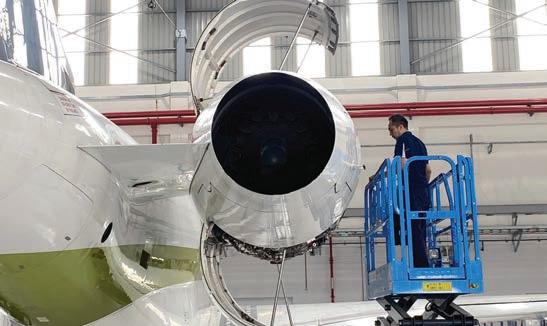
Silver Sky Aviation, established in 2014, is an aircraft maintenance company that is making its mark in Alaska, providing a range of services for small to medium-sized corporate aircraft. The company operates from two primary locations: a main facility at Wolf Lake Airport (4AK6) in Wasilla and a satellite operation at Anchorage International Airport (PANC). These locations allow Silver Sky to provide inspections, repairs, and specialized maintenance services to aircraft operators in the region.
In Wasilla, the facility consists of a 5,000sq-ft hangar located adjacent to a 3,800foot lighted runway, enabling easy access for aircraft in need of servicing. The Anchorage facility, operating in partnership with Signature Flight Support, is primarily used for transient aircraft and emergency maintenance support.
In addition to its fixed locations, Silver Sky Aviation o ers mobile maintenance services across the U.S. The company has completed maintenance work in remote areas such as Prudhoe Bay and Nome, as well as in more distant locations like Hawaii and Utah. This flexibility, the company said, allows it to accommodate unique maintenance needs in locations that may not have access to full-service aviation repair facilities.
Silver Sky o ers a variety of maintenance and engineering services, including standard aircraft inspections, dynamic propeller balancing, CNC machining, and 3D scanning. According to the company, its CNC router is the first of its kind in Alaska, providing precision machining for aircraft components. It also offers 3D scanning services to assist with composite manufacturing and repairs.
Additionally, Silver Sky provides computerassisted design and engineering services to support aircraft customization and the development of specialized components. The
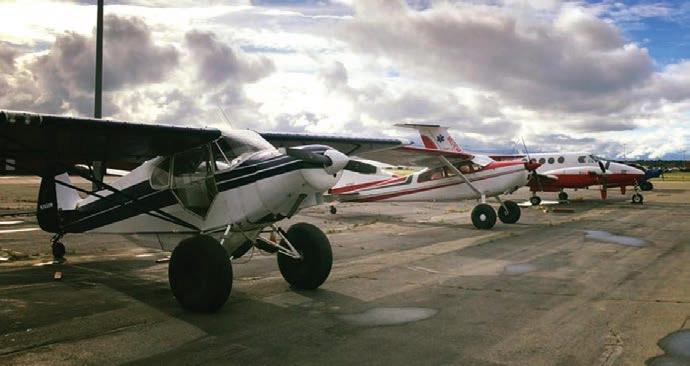
company describes its approach as one that integrates new technology with traditional aircraft maintenance practices, allowing for customized solutions tailored to the needs of individual operators.
The company’s leadership team includes founder Aaron McCarty, along with Austin Bulawa as director of operations and Jon Stinchcomb as director of maintenance. Silver Sky emphasizes safety, regulatory compliance, and ongoing employee training as key priorities. Additionally, the company highlights a collaborative approach to aircraft maintenance, stating that it works closely
with aircraft operators and maintenance departments to ensure e cient service delivery. Silver Sky frequently partners with Part 135 operators to support their fleet maintenance during peak operational periods, further expanding its role within the aviation industry in Alaska.
Since its establishment, Silver Sky Aviation has expanded its service o erings and continues to invest in new tools, training, and technology. The company said that it is focused on staying current with industry developments and integrating new capabilities into its maintenance services. S.R.
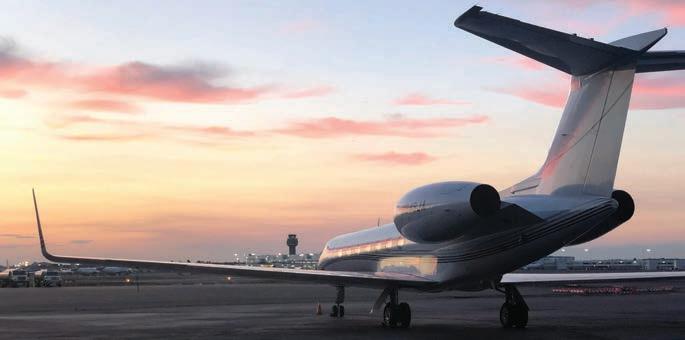
BY DAVID JACK KENNY
Textron Aviation Cessna 208B, Feb. 6, 2025, Nome, Alaska
The pilot and all nine passengers were killed when the scheduled Part 135 flight from Unalakleet (PAUN) to Nome (PAOM) went down on an icepack floating in Norton Sound about 12 miles offshore. Search-andrescue efforts were delayed by weather, and the wreckage was not located until the following afternoon.
The flight departed PAUN at 14:37 on an IFR clearance with a cruising altitude of 8,000 feet. After establishing radar contact, the Anchorage Air Route Traffic Control Center (ARTCC) controller advised the Nome Alaska Flight Service Station (AFSS) of an estimated arrival time of 15:35. At 15:11 the aircraft descended to 6,000 feet at the pilot’s discretion; the pilot reported having current weather and airport information for PAOM. At 15:12, airport operations advised the AFSS that Runway 10/28 would be closed for an estimated 10 to 15 minutes for de-icing; that information was relayed to the pilot via the ARTCC.
At 15:19:20, the Caravan levelled off after another pilot’s discretion descent to 4,000 feet. Airspeed gradually slowed from 112 knots. At 15:19:35, the autopilot disconnected. The airspeed was 99 knots and decreased to 70 knots over the next 19 seconds as the aircraft descended to 3,100 feet and turned from a westerly to a southerly heading. This was the last data point captured by its avionics.
The TKS ice protection system required a minimum airspeed of 95 knots and restricted gross takeoff weight to 8,870 pounds for flight into known or forecast icing conditions. Examination of the
airplane’s contents indicated that it may have been as much as 1,058 pounds heavier, also making it 803 pounds over the maximum gross weight authorized by the supplemental type certificate for its aircraft payload extender cargo pod.
Bell 505, Feb. 21, 2025, Rexburg, Idaho
Although the upper static lines were marked with orange visibility balls, the passenger said that neither he nor the pilot saw the power lines stretching across the frozen Ririe Reservoir until just before impact. The pilot attempted to dive beneath them, but the main rotor blades severed one of the three-phase lines, and the helicopter crashed onto the ice. The pilot was killed. The passenger, who’d been harnessed in the back seat to film a large herd of elk, was able to extricate himself from the wreckage. The main rotor blades “were widely disbursed about the main wreckage.” The power lines ran east-west about 160 feet above ground level.
Bombardier CRJ900LR, Feb. 19, 2025, Toronto, Ontario, Canada
Winds were gusting to 35 knots and the emergency locator transmitter (ELT) did not activate when an Endeavour Air (dba Delta Connection) Bombardier jet crashed on February 17 at Toronto Pearson Airport (CYYZ), and a high sink rate was noted in preliminary data gathered by the Transportation Safety Board of Canada (TSB).
According to the report, the approach to Runway 23 was conducted at an increased airspeed of 149 knots due to gusty wind conditions. At 500 feet agl, the autopilot
was disconnected. At 153 feet agl, a wind gust caused the airspeed to increase, leading the pilot flying to reduce engine thrust from 64% to approximately 43% N1, where it remained until touchdown.
As the aircraft descended, the rate of descent increased, triggering an enhanced ground proximity warning system “sink rate” alert.
Investigators have conducted preliminary interviews and recovered data from the cockpit voice recorder, flight data recorder, and other electronic components, which are being analyzed at the TSB Engineering Laboratory in Ottawa. The aircraft wreckage has been moved to a hangar at CYYZ for further examination.
While landing on Runway 23, the right main landing gear of the Endeavor Air CRJ fractured, causing the landing gear to collapse and the wing root to detach from the fuselage when the wing struck the ground. The wing separated, releasing jet fuel that ignited a fire. After the aircraft inverted and slid along Runway 23, it came to rest inverted near the intersection of Runway 23 and Runway 15L.
The right wing detached completely and slid about 215 feet further along the runway. Two flight crewmembers, two cabin crewmembers, and 76 passengers were on the flight.
According to the report, “Although the emergency locator transmitter was armed, it did not activate during the accident sequence.”
Following the accident, passengers and crew evacuated the aircraft. The right forward door and one right emergency exit window were used for evacuation. With the cockpit door jammed, the pilots had to exit through the emergency hatch in the cockpit ceiling, but only with the assistance of passengers since the hatch was partially blocked as the aircraft lay upside down.
Twenty-one of the 80 occupants sustained injuries, with two suffering serious injuries.
Piper PA-46-350P JetProp DLX, Jan. 17, 2023, Yoakum, Texas
Data recovered from the autopilot showed that after pitching up to a 20-degree nosehigh attitude and rolling 47 degrees right during what may have been an attempted missed approach procedure, the pilot engaged the system’s unusual attitude recovery (UAR) mode—only to fight the control inputs that would have returned the airplane to straight-and-level flight before eventually turning the system off. One of three passengers survived with serious injuries after the single-engine turboprop crashed into a cattle pasture after another rapid climb precipitated a stall. The other two passengers, the pilot, and the copilot were all killed.
The IFR business flight from Memphis (Tennessee) International Airport (KMEM) was cleared for the GPS approach to Runway 31 of non-towered Yoakum Municipal Airport (T85). A Center Weather Advisory for low IFR conditions was in effect. Although the autopilot was engaged during the approach, the passenger recalled that the airplane was “off course…and the pilot was struggling to get it back on course.”
About one mile southeast of the runway threshold, the pilot disconnected the autopilot and began a steep, climbing right turn. Tracking data showed that after a brief descent, the airplane entered another steep climb, slowing to a recorded airspeed of 16 knots before a second rapid descent.
The 64-year-old commercial pilot had an estimated 3,295 hours of flight experience. His son-in-law, an airline pilot, described him as “very competent,” but he had made no logbook entries in the two years before
the accident, making it impossible to determine his currency or recent experience. The 33-year-old copilot was a 700-hour flight instructor whose wife said that he only flew a few times a year.
Beech 390 Premier I, Aug. 17, 2023, Subang, Malaysia
A catastrophic loss of control on final approach to the Subang airport was triggered by the first officer’s in-flight deployment of the ground spoilers at an altitude too low to allow recovery. The cockpit voice recording showed that after the captain, flying in the right seat, called for unlocking the spoilers as part of the before-landing checklist, the first officer deployed them instead. Neither pilot noticed the error before aircraft control was lost.
All eight on board the charter flight and two motorists on the ground were killed when the jet abruptly turned right and plunged to the ground at an average rate of 3,500 feet per minute. The investigation found that the 41-year-old captain had 6,275 hours of flight experience and the required type rating but only 36 hours in type. The 44-year-old first officer had 9,298 hours but was not type-rated, having flown the Premier for the first time the previous day for a total of 3 hours.
Airbus AS350B2, Aug. 18, 2024, Lac d’Elvert, La Vérendrye Wildlife Refuge, Quebec
The pilot’s decision to press on under ceilings as low as 300 feet with negligible forward visibility ended with the helicopter crashing into the surface of the lake, killing all three on board. The wreckage was found submerged and inverted the following morning, at least 14 hours after the presumed time of the accident. An examination by TSB engineers showed that the
main rotor blades were turning when the craft hit the water in a nose-low, no-roll attitude, pitching it forward and blowing out the roof, doors, windscreen, instrument panel, and central console.
The helicopter departed from a private property in Mirabel at 09:57 local time on a visual flight rules (VFR) flight to Launey, landing at the Mont-Laurier Aerodrome at approximately 10:50. It was refueled while the occupants visited a private residence. On returning to the airport, the pilot declined an o ff er of ground transportation and took off at 15:30, following Route 117. A commercially operated helicopter remained at the airport because its pilot cancelled his afternoon flight due to weather. Witnesses in the wildlife refuge saw the AS350 “following the highway north at very low altitude” in “heavy rain and strong winds.”
At about 16:00, he made a precautionary landing at the Le Domaine rest stop. A passenger’s cell phone photograph taken before landing showed near-zero forward visibility in heavy rain. A sta ff member at Le Domaine o ff ered them accommodations, but the 3,175-hour private pilot declined, saying that he was “used to this kind of weather.” He departed again at 16:15; at 16:50, they crossed the Lac-Rapide campground in what witnesses described as “heavy rain.” A search began at 20:35 after friends of the pilot notified the Quebec Flight Information Centre that the helicopter had not arrived. z
Amy Wilder contributed to this report

BY GORDON GILBERT
A major update of FAR Part 141 pilot schools launched earlier this year with several FAA-sponsored public meetings. Additional meetings are scheduled in May in anticipation of a notice of proposed rulemaking. Although the FAA has revised requirements pertaining to pilot schools, Part 141 still has many foundational ties to Civil Air Regulations, which were implemented in the 1940s. The FAA believes modernizing Part 141 is essential for addressing challenges pertaining to certification, examining authority, and technology and learning methods.
Comments from the public meetings must be submitted by May 30, 2025.
May 1, 2025
ETIAS (European Travel Information and Authorization System) is an online pretravel and pre-boarding requirement applying to visa-exempt third-country nationals planning to travel to European states. The implementation date for ETIAS has been extended several times, with the latest May 1, 2025. The information is submitted via an online application ahead of arrival at borders enabling pre-travel assessment for irregular migration risks, security, or public health risk checks. ETIAS is one of two new European travel authorization programs that include EES (Entry/Exit System), which started in October 2024.
May 16, 2025
The Federal Communications Commission (FCC) seeks comments on proposed changes to frequency rules covering advanced air mobility and uncrewed aerial systems (UAS). First, the FCC proposes opening up the 450 MHz band to UAS command and control operations; allowing for a single, nationwide license in the band; and adopting flexible licensing, operating, and technical rules that will facilitate robust use of the band while minimizing interference to neighboring operations. The agency also
proposes expanding radiolocation operations in the 24.45–24.65 GHz band for UAS detection operations. Finally, the FCC proposes to modernize its legacy power regulations for aviation air-ground systems in the 849–851 and 894–896 MHz band, which are used for airborne connectivity. Comments were first due by April 16, 2025, and reply comments by May 16, 2025.
May 27, 2025
A recent interim final rule from the U.S. Department of the Treasury's Financial Crimes Enforcement Network (FinCen) significantly narrows the scope of the Corporate Transparency Act (CTA), which was enacted on Jan. 1, 2021, to enhance financial transparency and strengthen anti-money laundering efforts. The interim rule narrows the existing beneficial ownership information (BOI) reporting requirements under the CTA to require only entities previously defined as “foreign reporting companies” to report BOI. Entities previously defined as “domestic reporting companies” are exempted from the reporting requirements and do not have to submit BOI to FinCen or update or correct BOI previously reported to FinCen. With limited exceptions, the interim final rule does not change the existing requirement for foreign reporting companies to file BOI reports. This rule was
effective March 26, 2025. Comments must be received by May 27, 2025.
May 27, 2025
The FAA requests public comment on the agency’s intent to decommission the remaining Flight Service network of communication frequencies for advisory services via remote communications outlets (RCOs) in the U.S., except for Alaska. It is the agency’s intent to decommission all remaining 936 RCOs in the U.S. Comments are due by May 27, 2025.
June 1,
Singapore’s Civil Aviation Authority will implement ANR-129—foreign operator’s permit (FOP)—regulations in mid2025, replacing the current air navigation orders. These rules affect foreign air operator certificate (AOC) holders conducting commercial air transport or aerial work in Singapore. Private (Part 91) operators without an AOC are exempt. But FOPs are required for charter AOC holders for both revenue and non-revenue flights, including medevac and technical and positioning stops. Emergency landings, diplomatic flights, alternate airport landings, maintenance flights (with no passengers
or cargo), and overflights are exempt from FOP requirements.
The first draft report for the 2027 revision of the National Fire Protection Association (NFPA) guidelines for aircraft fuel servicing (NFPA Standard 407) is open for public comment through June 3, 2025. This standard outlines vital safety provisions for procedures, equipment, and installations in order to protect people, aircraft, and other property during ground fuel servicing of aircraft using liquid petroleum fuels. Although NFPA guidelines are recommendations and not mandatory, they are considered the industry standard for fire protection and prevention.
Starting June 12, 2025, all aircraft operating in Class A and in designated Class C airspace over the Republic of South Africa will require ADS-B Out. The mandated schedule follows consultations with government officials, private and commercial operator representatives, and other stakeholders.
The FAA and the National Park Service (NPS) have completed work on an air tour management plan (ATMP) and environmental assessment (EA) for Canyon de Chelly National Monument in Chinle, Arizona. The plan, scheduled to become effective on or about June 19, 2025, prohibits commercial air tours over the park and within one-half mile outside its boundary “to protect natural and cultural resources, sacred Tribal places, wilderness areas, and visitor experiences,” according to the two agencies. “The final ATMP and EA reflect public input received during a 30-day public comment period.”
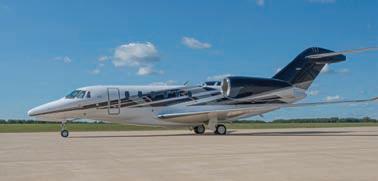
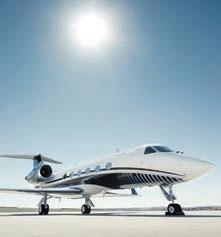
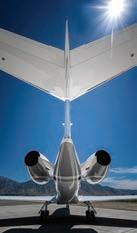
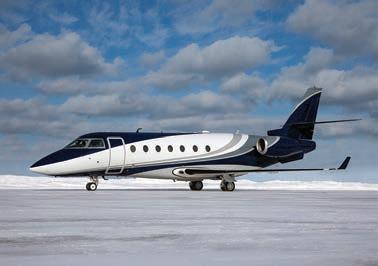
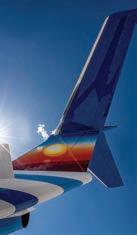
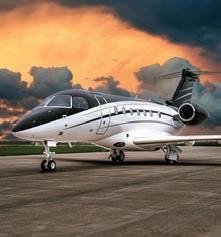

Duncan Aviation paints more than 200 aircraft per year in our state-of-theart facilities. Our locations are capable of painting all sizes of business jets utilizing the latest in paint products, equipment, and technology.
For the most current compliance status, see: ainonline.com/compliance
BY JESSICA REED

James Viola took the reins of the General Aviation Manufacturers Association (GAMA) on March 20, becoming the trade group’s sixth president and CEO since its founding in 1970. Viola most recently headed up Vertical Aviation International (VAI, née Helicopter Association International) and succeeds Pete Bunce, who has led GAMA since 2005. Viola had served as VAI’s president and CEO since 2020, representing and supporting the global helicopter industry and other vertical aviation stakeholders.
The White House selection of long-time Republic Airways president Bryan Bedford to become the next FAA administrator is drawing industry praise as he is considered “exceptionally wellsuited for the role.” President Trump announced the nomination on March 17, noting that Bedford “brings over three decades of experience in aviation and executive leadership to this critical position.” Bedford would step into the position vacated ahead of the presidential inauguration in January by former FAA Administrator Michael Whitaker. The position is currently being held on an acting basis by former NBAA COO Chris Rocheleau. Bedford has led Republic since July 1999 as president and CEO after serving in the same roles at Mesaba Holdings and Business Express Airlines.

Steven Bradbury assumed the office of U.S. deputy secretary of transportation after the White House nominated him for the role in January. He previously served as DOT general counsel under the first Trump administration and then briefly as acting deputy secretary and acting secretary of transportation.
Gulfstream Aerospace named Courtney Valentine as senior v-p and general counsel, taking effect May 5, following the retirement of Ira Berman. Valentine previously served as assistant general counsel and chief anti-corruption compliance officer at Gulfstream and more recently was assistant general counsel and director at parent company General Dynamics.
JSSI appointed Ben Hockenberg as chief investment officer. Hockenberg has worked for the company since 2020 as COO and as president of JSSI Parts & Leasing. Tim Elberfeld, who has served as JSSI’s CFO since 2022, has now taken on the COO title. JSSI also hired Andreas Mauritzson as executive v-p of JSSI Aviation Capital. Mauritzson previously served as president and COO at XOJet Aviation and as v-p of business strategy at Sun Air Jets.

JSSI’s Sean McGeough was chosen by the International Aircraft Dealers Association (IADA) board members as chair of the IADA Foundation Board. McGeough has held executive positions with companies such as Airbus Corporate Jets, Wheels Up, and Nextant Aerospace.
Vinnie Venditto was named executive v-p and general manager for Yingling Aviation. Venditto served in the U.S. Air Force before starting his career as an avionics technician and has since served as director of maintenance at Global Wings and as service center operations manager at Gulfstream. Yingling also hired Jason Cohen as executive v-p of sales. Cohen’s 30-plus years of experience in aviation includes playing a key role in launching West Star Aviation’s Bombardier program. Additionally, Tommi Krell joined Yingling as v-p of marketing and communications. Krell previously worked for Jet Aviation as head of global MRO marketing.
Mike Francis was tapped as the head of aircraft finance at Citi Private Bank . His 20-plus years of private aviation experience include working for SVB Private Wealth/First Citizens Wealth, First Republic Bank, Source Bank, and CIT Bank.

FDH Aero named Ian Walsh CEO, taking over from Scott Tucker , who now serves as non-executive chairman. Walsh was recently CEO, chairman, and president of Kaman Aerospace.
Electra Aero appointed Donn Yates as v-p of government programs. Yates served in the
military for 25 years before working in the private sector as COO of FlyExclusive and, more recently, as v-p of air dominance business development and strategy for Boeing’s defense, space, and security division.

Duncan Aviation tapped Marc Anderson as a completions and modifications sales representative based at its Provo, Utah MRO. Anderson has been with the company since 2011, working in material services and project management. Jeremy Rangel was named Duncan’s v-p of maintenance for its MRO facility in Lincoln, Nebraska. Rangel recently managed more than 250 technicians as the company’s airframe services manager.
Duncan also hired Mike Lewis as its new regional manager for the south/central U.S., including Louisiana, Oklahoma, New Mexico, and Texas. Lewis’ experience in aviation spans more than three decades, including working for FlightSafety, StandardAero, Collins Aerospace, and Gogo Business Aviation. Additionally, Keith Pecko was promoted to FBO services manager at Duncan’s Provo, Utah facility. Pecko began working at Duncan Aviation in December 2018 as a line service representative.
Charles “Chuck” Wade has taken on the role of senior v-p of product, sales, and customer excellence at Enstrom Helicopter. Wade’s four decades of experience in aviation include 24 years at Collins Aerospace, most recently as avionics market manager/director.
Jennifer Trock joined the law firm Morgan Lewis as a partner in Washington, D.C. Trock
recently served as chair of Baker McKenzie’s global aviation group and was the leader of its advanced air mobility team.
Innovative Advantage (IA) has appointed Nestor Fenoy as director of customer solutions and Katie Morris as customer solutions lead.
Fenoy’s 15-plus years of experience in the aviation industry includes working at Collins Aerospace as senior engineer manager in the cabin systems department. Morris was promoted from her previous role as senior embedded software engineer at IA.

Robert Reguero has taken on the role of deputy head of the Latin America region at Rotortrade. He brings almost 26 years of helicopter industry experience.
Titan Aviation Fuels tapped Kathy Moss as v-p of global business development. Moss has advocated for FBOs, handlers, and aviation professionals throughout her career, enhancing customer service training and executing strategic marketing plans.
Andrew Pearce joined DC Aviation as group maintenance sales consultant. Pearce has held multiple positions within airlines, as well as business jet operations, sales, acquisition, management, and maintenance providers.
Air Ambulances UK appointed Sarah Thewlis as chair of its board of trustees. Thewlis previously established an executive search and consultancy firm that specializes in regulatory organizations. She has also held leadership roles at the Royal College of Physicians, Royal College of General Practitioners, and Nursing and Midwifery Council. z
NBAA honored two industry luminaries who retired from longtime positions in April: GAMA president and CEO Pete Bunce and Signature Aviation corporate v-p of industry and government a airs Mary Miller. During an event held at Ronald Reagan Washington National Airport, NBAA president and CEO Ed Bolen presented an award to Bunce recognizing his decades of industry advocacy and leadership, as well as a Silk Scarf Award to Miller for her years of service to the industry. Bunce has retired after 20 years of leading GAMA, where he steered the association through dramatic expansion,
both in region and in scope, and advocated on a range of pressing industry issues. Miller, meanwhile, has had a career spanning more than 40 years, serving in her current position since 2010.
VAI presented Clemente Samson a letter of recognition on March 16 for his achievements in the industry, including training apprentices and maintenance technicians. Samson, currently with Heli-One in Richmond, Canada, has served as an aircraft maintenance technician for 49 years.
On Jan. 9, 2025, a privately operated, Brazilian-registered Cessna 525 CitationJet CJ1+ overshot the runway on landing, crossed a road, broke up, and burst into flames, killing the pilot. The four passengers were injured. Less than three weeks later, on January 29, a Venezuelan government-operated S550 Citation S/II crashed shortly after takeoff. All three occupants perished.
Two pilots and four passengers died when, on Jan. 31, 2025, a Mexico-registered Bombardier Learjet 55 air ambulance crashed shortly after takeoff from a U.S. airport on a planned flight home. In addition to the six fatalities on the twinjet, one person on the ground was killed. The airplane was operating under FAR Part 129 as a foreign air carrier.
On Feb. 10, 2025, a parked Gulfstream G200 was struck by a U.S.-registered Learjet 35A that veered off the runway while landing. The Learjet pilot was killed. Landing gear issues were present. The other fatal accident in the first quarter occurred on March 13. After taking off, a Citation CJ2 made a right turn and climbed to about 950 feet before it began a rapid descent. The sole pilot aboard died in the crash.
Meanwhile, fatalities more than tripled from accidents of nonscheduled U.S.registered business turboprops in the first quarter versus a year ago. Three fatal accidents claimed 10 people in the most recent quarter versus two accidents and three deaths in the first three months of 2024.
In the Jan. 29, 2025, crash of a Uganda-registered Beechcraft 1900D in South Sudan , all 20 occupants perished when the turboprop twin crashed on takeoff. Another eight died in three more accidents of non-U.S.-registered business turboprops in the first three months of this year. Seven accidents and 26 fatalities occurred in the same period last year.
Although runway excursions have decreased in the last three first-quarter periods—from 23 in 2023 to 20 in 2024 to 17 this year—they can be deadly, as evidenced in two of the five fatal bizjet accidents in this first quarter. z

JAMES HOLAHAN (1921-2015), FOUNDING EDITOR, WILSON S. LEACH, FOUNDER & CHAIR EMERITUS
EDITOR-IN-CHIEF – Matt Thurber
MANAGING EDITOR – Charles Alcock
DIGITAL EDITOR – Chad Trautvetter
EDITOR AIN MONTHLY MAGAZINE – Kerry Lynch
SENIOR EDITORS – Curt Epstein, Hanneke Weitering – Technology Editor
COPY EDITOR – Jessica Reed
NEWS REPORTERS – Sarah Rose, Amy Wilder
CONTRIBUTORS – Cathy Buyck – Europe, David Donald – U.K., Mark Huber – Rotorcraft, Jennifer Leach English, David Jack Kenny – Safety, Gordon Gilbert , Jennifer Meszaros – Southeast Asia, Dale Smith, Richard Pedicini, James Wynbrandt
PRODUCTION MANAGER – Martha Jercinovich
GRAPHIC DESIGNER – Grzegorz Rzekos
DIRECTOR OF VIDEO – Ian Whelan
SENIOR DEVELOPER – Cameron MacPherson
FRONT END DEVELOPER – David Lohmeyer
EXECUTIVE CHAIR – Dave Leach
PRESIDENT – Ruben Kempeneer
HEAD OF PEOPLE & BRAND – Jennifer Leach English
SENIOR DIRECTOR, INDUSTRY AFFAIRS AND EVENTS – Nancy O’Brien
ADVERTISING SALES
DIRECTOR OF SALES - Henry Specht
Victoria Tod – Northeastern U.S./Eastern Canada/United Kingdom, +1 (203) 733-4184
Michelle James – Western U.S./Western Canada, +1 (520) 343-0236
Joe Rosone – Midwestern U.S., Southeastern U.S./Caribbean/Brazil, +1 (301) 693-4687
Diana Scogna – Europe/Middle East, +33 6 62 52 25 47
DIRECTOR OF MARKETING AND CLIENT SERVICES – Lisa Valladares
AUDIENCE DEVELOPMENT DIRECTOR – Eileen Silberfeld
EVENTS SPECIALIST – Brien O’Brien
MARKETING SPECIALIST – Alyssa Barry
SOCIAL MEDIA MARKETING – Zach O’Brien
SALES ADMINISTRATOR – Cindy Nesline
MANAGER OF FINANCE & HUMAN RESOURCES – Tracy Britton
ACCOUNTS PAYABLE – Mary Avella
ACCOUNTS RECEIVABLE – Bobbie Bing
U.S. HEADQUARTERS
214 Franklin Ave., Midland Park, NJ 07432, +1 (201) 444-5075
Advertising Inquiries: +1 (201) 345-0085, adsales@ainonline.com
Circulation Inquiries: +1 (201) 345-0085, subscriptions@ainonline.com
WASHINGTON, D.C. EDITORIAL OFFICE: Kerry Lynch: klynch@ainonline.com, Tel: +1 (703) 969-9195
EUROPEAN EDITORIAL OFFICE: Charles Alcock: calcock@ainonline.com, Tel: +44 7799 907595
Aviation International News (ISSN 0887-9877) is published twelve times per year (monthly). Periodicals postage paid at Midland Park, N.J., and additional mailing o ces. Postmaster: Send address changes to AIN Media Group, 214 Franklin Ave., Midland Park, NJ 07432. Allow at least eight weeks for processing. Include old address as well as new, and an address label from a recent issue if possible.
Subscription inquiries: +1 (201) 345-0085 or email: subscriptions@ainonline.com.
Aviation International News is a publication of AIN Media Group, 214 Franklin Ave., Midland Park, NJ 07432; Tel.: +1 (201) 444-5075.
Copyright © 2025 All rights reserved. Reproduction in whole or in part without permission of AIN Media Group is strictly prohibited. AIN Media Group publishes Aviation International News, AINalerts, AINonline, Business Jet Traveler, BJTwaypoints, ABACE Convention News, Dubai Airshow News, EBACE Convention News, Farnborough Airshow News, FutureFlight.aero, VAI Convention News, LABACE Convention News, MEBAA Convention News, NBAA Convention News, Paris Airshow News, Singapore Airshow News, Mobile Apps: Aviation International News; AINonline. PUBLICATION MAIL AGREEMENT NO. 40649046 RETURN UNDELIVERABLE CANADIAN ADDRESSES TO: PITNEY BOWES INTERNATIONAL MAIL, STATION A, P.O. BOX 54, WINDSOR, ON, N9A 6J5, returns il@imex.pb.com.
For feedback, letters to the editor, or other editorial needs, please contact AIN’s Editors at ainedit@ainonline.com
Save time and money by monitoring the value of your aircraft in 'real-time'.
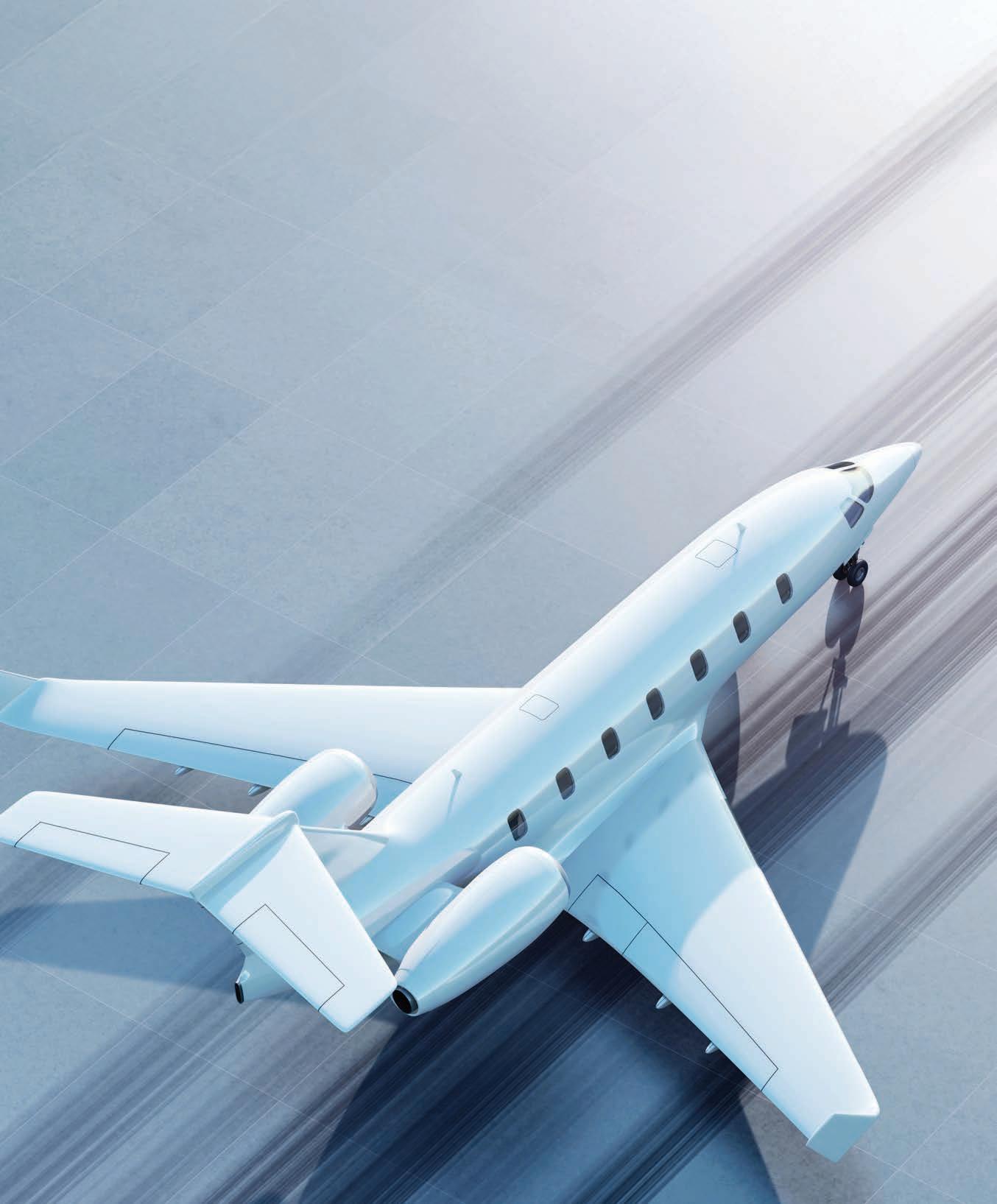
Subscribers can also:
– Generate a comprehensive list of all aircraft transactions in the last 12 months
– View a detailed photo gallery for your specific aircraft
– Receive a weekly report summarizing market fluctuations

It




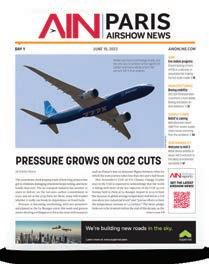



It
